
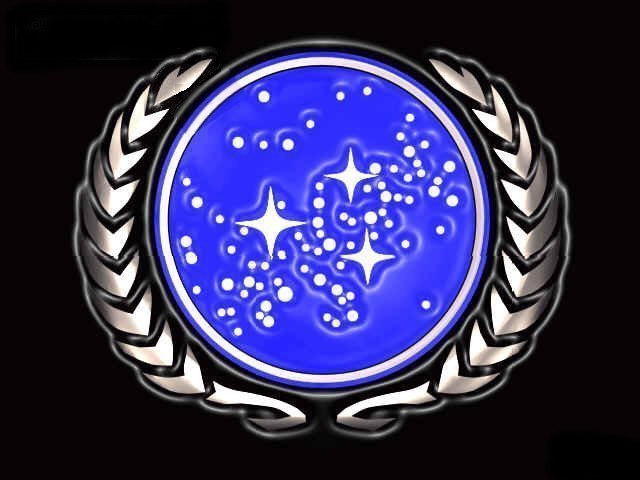
 The United Federation of Planets: currently in 2293 it consists of 87 member worlds (and their colonies) forged together as a vast unified democratic nation. Each member has a single vote in the say of the Federation Council; this was deliberately intended to enforce the forging of consensus between members. As the Federation has grown and new members are sworn in, so the forging of alliances and consensus has become more challenging. It also changes the beliefs, and thus the face of the United Federation of Planets, over time. It was formed in the Earth calender date May 8th 2161. Admiral Jonathan Archer declared this day to be the day that the Earth made a new alliance that would spread the word of peace and exploration across the universe. The latest additions to the Federation include the Betazoids, Bolians, Trill and Grazerites. Their worlds are the latest to be enhanced with starbases, shipyards, science and medical resource centres, as well as being firmly paced on Federation trade routes.
The United Federation of Planets: currently in 2293 it consists of 87 member worlds (and their colonies) forged together as a vast unified democratic nation. Each member has a single vote in the say of the Federation Council; this was deliberately intended to enforce the forging of consensus between members. As the Federation has grown and new members are sworn in, so the forging of alliances and consensus has become more challenging. It also changes the beliefs, and thus the face of the United Federation of Planets, over time. It was formed in the Earth calender date May 8th 2161. Admiral Jonathan Archer declared this day to be the day that the Earth made a new alliance that would spread the word of peace and exploration across the universe. The latest additions to the Federation include the Betazoids, Bolians, Trill and Grazerites. Their worlds are the latest to be enhanced with starbases, shipyards, science and medical resource centres, as well as being firmly paced on Federation trade routes.
Humans, Vulcans, Tellarite, Andorians and the Centauri colonies jointly formed the first member races of the United Federation of Planets. A constitution was drawn up, much in the vein of the 1776 Constitution of the United States of America drawing on such documents as the Magna Carta, U.S. Bill of Rights, Constitution of the United Nations and the Constitution of the Coalition of Planets. A new age of peace and prosperity was born, and the expansion into the stars increased at a logarithmic rate. Co-operation between Federation member races increased, advancing technology forwards in all aspects. New races with warp technology were signed up to the Federation. Typically, these newly contacted worlds are in twenty-first Century-equivalent technological and cultural status. In order to bring them in towards the Federation, their worlds are accelerated 200 years of development to Federation present technology (Author's notes: see ST: SNW 1.01 Strange New Worlds). This was expedited especially during the time of the Klingon and Romulan Cold Wars towards the Federation. Worlds with either strategic locations or the presence of valuable resources and minerals made membership a priority. The danger with this is making sure that the new members aren't culturally changed, or even destroyed, by this uplift in technology and knowledge. Do they have the wisdom culturally to receive this knowledge? Is a dictator going to emerge because the Federation geve them advanced knowledge? These are the pitfalls the specialist social scientists must get answers for first. With great power comes great responsibility.
Author's Notes:
Star Trek: Strange New Worlds 3.07 What is Starfleet? posed the question "What is the difference between the Federation and an Empire?", comparing the Klingons with the Federation. The Interim Years (and this page) will explore this is very fine detail.
The main answer is: choice. The members of an Empire have generally been conquered or coerced into joining the Empire, ruled from a home world and modelled by force on the culture of the conquering home world and their species. A Federation is voluntary. You are offered membership, with Federal laws as the rules, and it is your choice to join or not, stay or not. The individual colonies are free (within Federation laws) to keep their own cultural identity and self-govern. An Empire uses force to keep order and mould conquered worlds to their ways. A Federation is a choice to join and interprete the Federal laws at a colonial level.
The United Federation of Planets is a balance between federal and colonial laws, and their interpretations. Being a Federation member means the federal laws and courts can override local ones. Massive corporate giants can move in on new member worlds and colonies, 'McDonalds'ising the local indiginous worlds with their brands and corporate power. New Federation worlds can become homogenised in the face of such established megacorporations. Ironically, by joining the Federation, worlds can risk losing the individuality that made them special in the first place. Entities like Starfleet will rapidly inject familiar mushroom-shaped spacedocks and starbases in orbit, Starfleet buildings on the ground and employ a huge array of Federation species to run them. In a very sort time, worlds can go from being almost 100% indiginous population to a mix of species. This can by a huge cultural shock, one for whom many worlds might not be prepared for in practice. Domestic sovereignty is trumped by the federal laws of this monolithic nation state. Starfleet sells the dream of the United Federation of Planets and its values. However, as the latest colony number 109, you tend to be at the back of the queue for priorities, as the home world takes presidence. Lots of aspects of UFP federal law is about what you cannot do: eugenics, no subspace weapons, no augment tech etc. On a newly contacted worlds, the hierarchy benefits from contacts and the new tech from the Federation. This tech takes time to trickle down to the person on the street. Starfleet has a white saviour complex; they step in to help with hospitals, water supplies, anti-pollution etc. Leaders of the new member worlds and newly contacted worlds do their best to cling onto power. The new Zephram Cochranes may invent the warp drive, but don't have political savvy to run a planet. With first contact, the UFP needs to study so many variables that it is impossible to predict who will step up and whether they're appropriate for Federation membership or not. Federation membership conditions keep political extremism out of power, lest UFP membership be suspended.
The United Federation of Planets consists of:
Federation President
Federation Council
Interplanetary Supreme Court of Justice
Economic and Social Council
Trusteeship Council
Starfleet
Secretariat
Federation News Service
Federation News Network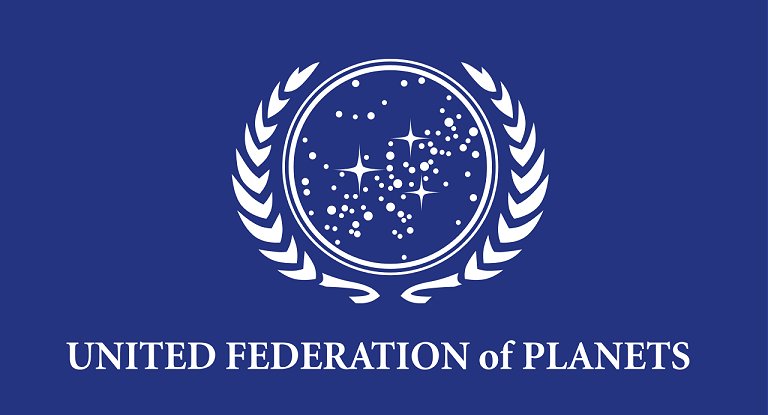 Federation Security
Federation Starfleet Marine Corps
Federation Colonial Service
Federation Diplomatic Service
Federation Diplomatic Protection Service
Federation Science Council
Federation Transport Service
Federation Security
Federation Starfleet Marine Corps
Federation Colonial Service
Federation Diplomatic Service
Federation Diplomatic Protection Service
Federation Science Council
Federation Transport Service
The United Federation of Planets is politically driven by a balance of the President, the democratically-elected representatives of the core worlds and over a thousand colonies in the Federation Council, the Supreme Court holds both the President and Council to account against the law. Finally there are the news media channels and journalists that are there to hold these former three insitutions to account to the public, uncovering any rulebending or inappropriate activities. Federation citizens ultimately hold all of these political and legal bodies to account with democratic elections.
The Federation is overseen by a democratically elected President. The Presidency of the U.F.P. is based upon four year terms. Presidents may be elected for more than one term of office, but for no more than two terms under normal circumstances. A President can provide political direction for the Federation Council, or may issue Exeutive Orders themselves under urgent situations. The President is the Commander in Chief of defensive tactical operations, overseeing Starfleet in these matters. The President has a Vice President to cover if the President is unavailable or killed. They have an equivalent of the West Wing staff, to provide him with polling figures and speeches to read. The President is the physical embodiment of the Federation, representing all member worlds and colonies when signing treaties, trade or diplomatic agreements and in all summit political meetings. The President provides continuity of serving a full four-year term, or two terms. The Federation Council members can all change within this timeframe.
As with the US President, the Federation President is constrained by equivalents of the 4th and 14th Amendments of the Constitution, preventing serving more than two terms in office to stop a President becoming a dictator ot Tsar.
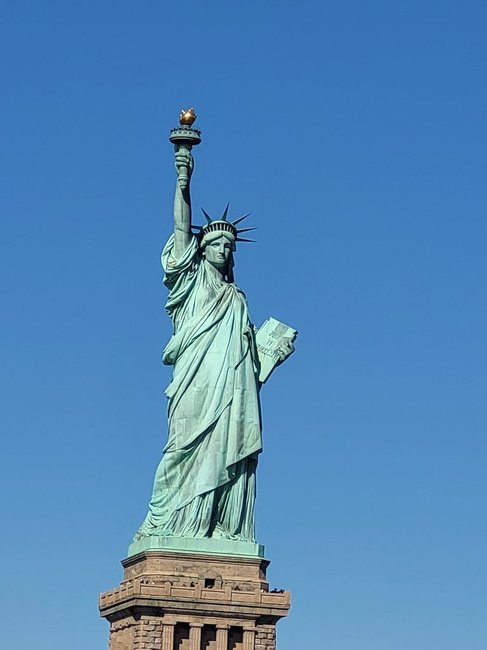 The Federation Council consists of representatives for the core worlds, overseeing the federal laws for them and their sponsored colonies. Federation Council members are decided in democratic elections, held every four years in the midterm of a Presential cycle. Federation Council proceedings are broadcast across the Federation, allowing citizens to watch democracy in realtime. The Federation Council discusses all matters of Federation policy and politics, signing into power Presidential policies or rejecting them. Whilst Federation colonies and worlds are, for the most part autonomous, the Federal laws and constitution that govern the Federation of which they are members, is controlled by the Federation Council. The Presidential Office will need to work on the senators in the Federation Council in order to get political bills passed by the council. Senators are re-elected every six years, and may run as many times as they wish.
The Federation Council consists of representatives for the core worlds, overseeing the federal laws for them and their sponsored colonies. Federation Council members are decided in democratic elections, held every four years in the midterm of a Presential cycle. Federation Council proceedings are broadcast across the Federation, allowing citizens to watch democracy in realtime. The Federation Council discusses all matters of Federation policy and politics, signing into power Presidential policies or rejecting them. Whilst Federation colonies and worlds are, for the most part autonomous, the Federal laws and constitution that govern the Federation of which they are members, is controlled by the Federation Council. The Presidential Office will need to work on the senators in the Federation Council in order to get political bills passed by the council. Senators are re-elected every six years, and may run as many times as they wish.
The Supreme Court consists of 27 judges selected by the Office of the President. These courts decide the top legal cases and are the arbiters in the top legal matters, especially matters pertaining to the law and the bills passed by the Council and President. The appointments are for life, until the judge dies, resigns or is impeached. Judges may serve for decades or more.
As can be seen from the above breakdown of the Federation, Starfleet is the exploratory and defensive organisation of the Federation and is thus ultimately controlled by the democratically elected members of the Federation Council and the President has final authority over Starfleet matters.
Currently, as of Stardate 9529.5, the United Federation of Planets consists of 87 members, covering an area of space that requires several months at high warp speeds to cover from end to end. Earth is the administrative headquarters of the Federation, with the President's office based in Paris, France, and the Federation Council based in San Francisco, near to the Starfleet Command buildings. The Federation is also responsible for numerous colony worlds.
The United Federation of Planets is not a solid entity. It is a froth of blue bubbles in the blackness of unclaimed space. There are no lines and no border lines. There isn't a point where blue Federation space ends and red Klingon space starts. More Federation space gradually fades away the further from the core worlds and older colonies you get, until the starbases become supply bases, which then lose their Starfleet colours and elements to become independent supply posts. Even the colonies go from eloquent worlds named after the stars they orbit, to become worlds named for those who settled it, like Sherman's Planet, O' Ryan's Planets, Coopersworld, Buckley's Planet or Gravesworld.
The very nature of the United Federation of Planets is not what you think. There is an ideal, a vision. This is the philosophy that binds the worlds, colonies and species together. Many of the colonies, especially the outer ones, don't even have the hubs and facilties that denote them as a Federation colony. These colonies tend to exist in their own philosophies, mapped onto the Federation for political or security reasons, aiding the Federation Council in claiming space for the future, whilst the colony has freedom from Federation oversight for the most part purely due to distance. VAST distance. Even 12000 Starfleet ships can only cover so much space. Policing it all is impossible.
A flat, two dimension map (good though the Star Trek: Star Charts and Larry Nemecek's amazing Stellar Cartography are, they do encourage the two-dimensional thinking that Spock spoke of in the Wrath of Khan) is a gross oversimplification of the real situation with the border being more like said flat map being crumpled into a ball, then opened up again with creases, folds and complicated shapes. The flat map is an oversimplification of the untidy truth. This is not a binary black-and-white universe, as the Klingon encounters at Genesis and Elaas showed, there is nothing to say space 'belongs' to anyone and a ship can cloak and sneak almost anywhere. Space is simply TOO VAST to police. Starfleet can deal with the warships and fleets; the pirates, smugglers, traffickers and illegal traders have to be addressed by intelligence-driven action.
Out on the frontier there are settlers, colonists building up their colony - 2nd or more generation - traders, smugglers, traffickers, criminals and spies. These are the places seldom spoken of in the Federation Council until it's politically beneficial to do so. Like the Falkland Islands, Gibraltar or other British Overseas Territories; they exist, but no one talks about them. As mentioned earlier, many of these colonies are there for political or cartographical reasons. More like the Spratley or Paracel Islands. Many of these worlds are of little use beyond having a breathable atmosphere and favourable ecosystem. Patrol ships like Okinawa, Akula and Apollo classes add weight to such claims. These colonies act as communicatin relays, monitoring stations, supply posts, shor leave and cargo distribution centres.
This is the Unseen Federation: Prospecting, colonising, settling a world in the ways and manners the colonisers wish: the liberal United Federation of Planets embraces diversity and freedom. Some worlds are colonised for specific reasons: minerals, mining, drilling, others try to capture paradise or a way of life. Sometimes they try to retain or recreate the past. Like counties and states in America, the colonies have autonomy to a great extent as the Federation Council can't micromanage all of the colonies. Colonial governors must conference via hologram. There are Federation federal laws and there are colonial state laws. Colonies on their own make a declaration of territory. A starbase cements that claim.
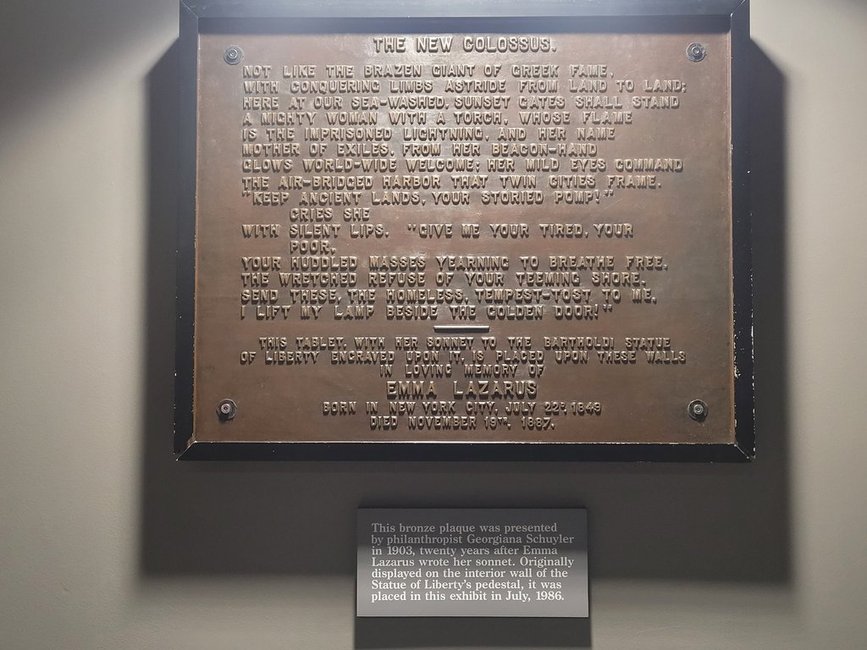
Sources:
Star Trek: The Cage
Star Trek: Journey to Babel
Star Trek: Devil in the Dark
Star Trek: The Cloud Minders
Star Trek: Mark of Gideon
Star Trek: Conscience of the King
Star Trek: The Way to Eden
Star Trek: TNG Hide and Q
Star Trek: TNG Starship Mine
Star Trek: TNG Home Soil
Star Trek: TNG Symbiosis
Star Trek: TNG The Neutral Zone
Star Trek: TNG The Measure of a Man
Star Trek: TNG The Price
Star Trek: TNG Legacy
Star Trek: TNG The Outcast
Star Trek: TNG Aquiel
Star Trek: TNG The Drumhead
Star Trek: TNG The Perfect Mate
Star Trek: TNG Force of Nature
Star Trek: TNG Journey's End
Star Trek: DS9 Shakaar
Star Trek: DS9 Homefront
Star Trek: DS9 Paradise Lost
Star Trek: DS9 Extreme Measures
Star Trek: DS9 Rapture
Star Trek: VOY Author, Author
Star Trek: VOY Equinox
Star Trek: VOY Equinox part 2
Star Trek: VOY Night
Star Trek: VOY Friendship One
Star Trek: ENT United
Star Trek: ENT Demons
Star Trek: ENT These Are The Voyages...
Star Trek: ENT Zero Hour
Star Trek III: The Search for Spock (1984)
Star Trek IV: The Voyage Home (1986)
Star Trek V: The Final Frontier (1989)
Star Trek VI: The Undiscovered Country (1991)
Star Trek: Insurrection (1998)
Blade Runner (1982)
Blade Runner 2049 (2017)
Articles of the Federation by Keith R A DiCandido (2005).
Utopia for Realists: And How We Can Get There by Rutger Bregman (2017).
What's Next: A Backstage Pass to The West Wing, Its Cast and Crew, and Its Enduring Legacy of Service by Melissa Fitzgerald and Mary McCormack (2024).
Walk With Us: How the West Wing Changed Our Lives by Claire Handscombe (2016).
This is London: Life and Death in the World City by Ben Judah (2016).
This is Europe: The Way We Live Now by Ben Judah (2023).
Dreamland: The True Tale of America's Opiate Epidemic by Sam Quinones (2015).
The World of Cyberpunk 2077 by Martin Batylda (2020).
Londoners: The Days and Nights fLondon Now - As Told by Those who Love It, Hate it, Live It, Left It and Long for It. by Craig Taylor (2011).
New Yorkers: A City and Its People in Our Time by Craig Taylor (2021).
Pacific Ways: Governments and Politics in the Pacific Islandsby Stephen Levine (2016).
Janesville: An American Story by Amy Goldstein (2017).
You are all Fired by an Algorythm: The Coalescence - A World Without Jobs. by Louis Halpern (2025).
The Outlaw Ocean: Crime and Survival in the Last Untamed Frontier by Ian Urbina (2019).
The High Seas: Ambition, Power and Greed on the Unclaimed Ocean by Olive Heffernan (2024).
Europe's Quiet Occupation by Luke Z. Roch (2025).
Saudi America: The Truth About Fracking and How It's Changing the World by Ms Bethany McLean (2018).
The Have and Have-Yachts: Dispatches on the Ultrarich by Evan Osnos (2025).
Energy by Richard Rhodes (2018).
Volt Rush: The Winners and Losers n the race to go Green. by Henry Sanderson (2022).
Dead in the Water: Murder and Fraud in the World's most secretive industry by Matthew Campbell and Kit Chellel (2022).
The Rare Metals War: the dark side of clean energy and digital technologies by Guillaume Pitron and Bianca Jacobsohn (2020).
Chip War: The Fight for the World's Most Critical Technology by Chris Miller (2022).
Vassal State: How America Runs Britain by Angus Hanton (2024).
Anywhere but Here: How Britain's Broken Asylum System Fails us all by Nicol Kelly (2025).
Bloody Foreigners: the story of immigration to Britain by Robert Winder (2010).
Why Politicians Lie about Trade: ...and what you need to know about it. by Dmitry Grozoubinski (2025).
Poverty, by America by Matthew Desmond (2023).
Fentanyl, Inc.: How rogue chemists are creating the deadliest wave of the opiod epidemic by Ben Westhoff (2019).
Tenants: the people on the frontline of Britain's housing emergency by Vicky Spratt (2022).
Evicted: Poverty and Profit in the American City by Matthew Desmond (2016).
Abundance: How we build a better future by Ezra Klein and Derek Thompson (2025).
Baltic: The Future of Europe by Oliver Moody (2025).
All or Nothing: How Trump Recaptured America by Michael Wolff (2025).
Peril by Bob Woodward and Robert Costa (2021).
Fear: Trump in the White House by Bob Woodward (2018).
When America Stopped Being Great: A history of the present by Nick Bryant (2021).
The Forever War: America's Unending Conflict with Itself - the history behind Trump and JD Vance by Nick Bryant (2024).
Far From EUtopia: How Europe is failing - and Britain could do better. by Ross Clark (2025).
My Fourth Time, We Drowned: Seeking refuge on the world's most deadly migration route by Sally Hayden (2022).
The Ungrateful Refugee by Dina Nayeri (2019).
Hostile Environment: How Immigrants Became Scapegoats by Maya Goodfellow (2019).
The Good Immigrant USA: 26 Writers on America by Nikesh Shukla and Chimene Suleyman (2019).
The Truth about Immigration: Why successful societies welcome newcomers by Zeke Hernandez (2024).
America: The Farewell Tour by Chris Hedges (2018).
The Myth of American Idealism: How U.S. Foreign Policy Endangers the World by Noam Chomsky and Nathan J. Robinson (2024).
Author's notes:
So what is the United Federation of Planets in 2293?
Most maps of the Federation from Star Trek Star Charts and Star Trek Stellar Cartography are from maps set in the 2370s. Back in 2293 the picture is very different. The Federation is a fraction of the size, with bubbles of Federation space centred around core worlds and colonies.
This is like colonial America in the 1880s.
Or this 1880s map.
Or this third version of an 1880s map.
as opposed to 1850 style population – analogous to the Federation in 2260
or the 1795 map of American colonies which is analogous to the early 23rd Century.
The core worlds of Earth, Vulcan, Andoria, Tellar and the Rigel colonies are like the East Coast of America 1880 with an extensive route of starbases and trade routes matching the spidery lines of the railroads. The outer reaches of the Federation (much closer than the 2370s map suggests) is more like the Mid-West and Western USA in 1880 with only a few routes and bases. There are just over one hundred starbases in existence at this time, most in the central core region of the Federation with a reducing number of smaller sized bases towards the frontier. Although the Stellar Cartography map shows Federation space reaching down towards Betelgeuse, by 2293 the truth is the Caitian region is fairly new at being assimilated into Federation space. Star Trek II had the Mutara Sector as a testing ground for Genesis, this can safely be assumed to be far from settled Federation space, only just being colonised in the region towards the present day in the Interim Years.
Even the worlds that we saw with colonies on in ST: ENT and TOS are now only home to several million settlers by 2293. Put on the scale on an Earth-sized planet, this would only be the same population as a couple of cities. The rest of the planet is unsettled. This explains how the Klingons could cross the Neutral Zone in TOS without being noticed. Like the 1880s America, the Federation has begun a process of civilisation since the signing of the Khitomer Accords in 2293, expanding the Starbase network to aid communication just like the railroad did in the 1880s. The era of subspace communications taking hours for an update are coming to an end, rather like the upgrade from dial-up internet to broadband and then onto high speed fibre-optic. The advent of the Constellation class in the 2280s provided a major boost to deep space exploration and colonial programmes. One of the main projects is to solidify the border lines with the neighbouring nations, to allow for internal stability and avoid conflicts through unknowingly passing into the territorial space of another nation. This is the end of the ‘Wild West’ Federation as the age of the ‘Tamed and Civilised’ Federation dawns.
 The Ideal
The Ideal
The Federation is an ideal, one that was first written over 130 years ago on Earth. These ideals are to abolish hatred, hunger, disease, war and want. The Federation has an Interstellar Law which it holds dear, guiding all members towards common values and ethics. With cutting edge technology available this allows the core member worlds of Earth, Vulcan, Andoria, Tellar, Delta IV, Betazed, Alpha Centauri and the Rigel Colonies to support populations of billions of people in an environment of arcopolises that support the people and the environment in a delicate balance. Even compared to the time of Jonathan Archer and James T. Kirk these worlds have been at the cutting edge of advancement. Democracy holds sway here and each world has a representative on the Federation Council. Despite the occasional threat from V'ger and Whaleprobes, this central region of space has known peace for decades.
Author's Notes: This is all about what Star Trek is about: exploring, discovery and diplomacy, not shoot 'em up Star Wars-lite. My visit to see the Magna Carta exhibition at the British Library brought home to me the values that have been developed over the centuries and cherished: the Magna Carta, the US Declaration of Independence and Bill of Rights, the Charter of the UN and so on. The Charter of the United Federation of Planets will develop this further, to give ALL life equal rights and to cherish ALL worlds EQUALLY, with no special veto powers given to a minority, which is the case with the UN Security Council.
Despite what was seen in the Star Trek movies of the 80s and 90s, this is NOT an era of all-out constant war by the Federation. Instead this is an era of fierce ideological contrasts and cold war, with diplomacy and debate winning over a shooting war option. Whilst there are conflicts in neighbouring nations, the UFP itself has not really faced open warfare since the Federation-Klingon War of 2256 - 2257. Brief conflicts such as clashes with the Klingons and the Romulan clashes leading up to Tomed are the worst in recent times, beyond the Tabula Rasa campaign of 2289 - 92 - which took place mostly outside of Federation space.
In the Interim Years, I want to see a victory of diplomacy over warfare. Talking and political engagement over fighting. This is where the Federation reaches maturity.
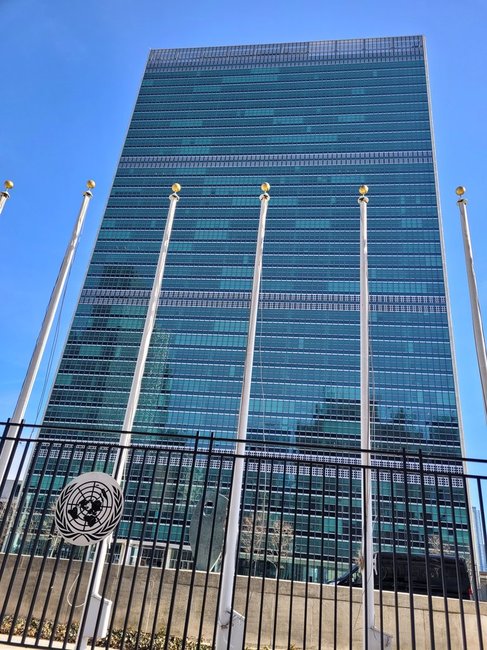 This ideal, when examined, is focussed on the major homeworlds of the Federation members, and is spread outwards through the administrative aspects of the Federation, such as embassies, ambassadors and, most importantly, Starfleet. Starfleet officers and personnel are taught the ideals of the Federation and go forth into the stars to practice these ideals and uphold these same ideals no matter what is faced.Federation media is also a powerful tool for the spreading of the Federation ideal. As Quark and Garak noted in Deep Space Nine, the Federation is insidious. The Federation ideal is a very attractive one, peace and prosperity, sharing of knowledge and the light of no longer possessing the chains of money and wealth to burden our desires with. Of course, as with most [if not all] ideals, the ideal is most strongest at the source, and the further away from the source one travels, the less strong this ideal is. It is easy to imagine paradise on Earth. All poverty and disease has been defeated, pollution and starvation are the nightmares of the past, and everyone has the equal opportunity to achieve anything they desire and be anything they desire. Further outwards, on the outer rims of the Federation, where supplies are stretched to the limit, where many of the technological advances have not yet reached, these dreams and ideals seem almost as far away as they do in present day Earth.
This ideal, when examined, is focussed on the major homeworlds of the Federation members, and is spread outwards through the administrative aspects of the Federation, such as embassies, ambassadors and, most importantly, Starfleet. Starfleet officers and personnel are taught the ideals of the Federation and go forth into the stars to practice these ideals and uphold these same ideals no matter what is faced.Federation media is also a powerful tool for the spreading of the Federation ideal. As Quark and Garak noted in Deep Space Nine, the Federation is insidious. The Federation ideal is a very attractive one, peace and prosperity, sharing of knowledge and the light of no longer possessing the chains of money and wealth to burden our desires with. Of course, as with most [if not all] ideals, the ideal is most strongest at the source, and the further away from the source one travels, the less strong this ideal is. It is easy to imagine paradise on Earth. All poverty and disease has been defeated, pollution and starvation are the nightmares of the past, and everyone has the equal opportunity to achieve anything they desire and be anything they desire. Further outwards, on the outer rims of the Federation, where supplies are stretched to the limit, where many of the technological advances have not yet reached, these dreams and ideals seem almost as far away as they do in present day Earth.
The Ideal was a good idea on the founding of the United Federation of Planets in 2161. The truth is, by 2293, it is still something to aspire to, a goal, and is still just out of reach. There is to be no want, no hate, no greed, no hunger and no disease. The truth is more complicated. This doesn't mean that everyone lives in big mansion houses with swimming pools and sixteen bedrooms. For no poverty: theres a minimum wage of Federation credits that pays for a standard of living that is very comfortable. There is housing for everyone and many things are free, being paid for as a social benefit for everyone. It is the change in mindset of the individuals that now says the quest for riches is unnecessary - we can afford and have the things we really need. People seeking weah are outliers, not the norm, controlling the mega-corporations and having the drive that isn't sated by an average life. For these people, gaining wealth is self-improvement. People are people. Wealthier individuals still have bigger houses and some even their own colonies. The difference now is people, as a whole, don't miss not having material things like that. Automation and artificial intelligence has freed up most people to pursue a life that is enjoyable. There are indeed no diseases in the future, at least far less fatal ones. DNA and genetic medicines have meant that cancers, dementia and other aging afflictions are also held at bay, increasing life-expectency from 80-odd to over 120 years of good quality life. Whilst this is a vast improvement to historical age ranges, it opens up a black market in genetic enhancers and cognitive enhancer drugs: people sometimes want more than they can have. Again, people are people. We'll always have the diversity of human desires, both delightful and perverted, such is the range of human existence and needs.The UFP propaganda may suggest it is all sunshine and roses, the darker aspects of humanity having been left far behind, the truth is it is all still there to see, if you know where to look.
Factors motivating the Federation are not limited to the ideal. Energy Security has been high on the agenda: dilithium has made warp travel possible and finding supplies has been a driving force for protectorate status and even membership of the Federation. During the expansion of the Federation that ultimately caused conflict in the 2160s and 2240s, part of this was to find supplies of dilithium to keep the starships travelling at warp speed and the power stations of the member worlds running to power the future. Colonial operations drive the need for starships as the population of each member world swells due to the advanced medical technology available. Where in the past medical aspects like genetic disorders and disease would have limited the reproducive rate of a species, these limits have now been minimised and, as a result, new home worlds are needed for the ever-growing Federation population. Federation policies are strongly driven by this. Feeding and watering the population of the Federation drives the colonial programme as well as looking at how the population of a planet can continue to expand. A related factor is Immigration and Border Control. The border of the Federation is a convoluted 3-dimensional frontier that is almost ungovernable. Federation police and border services utilising Starfleet Okinawa class corvettes and monitoring stations for Starfleet Security and Starfleet Intelligence help to control who crosses into Federation space. One of the concerns is illegal trafficking of goods, drugs and people and the Federation Council must strive to ensure these illegal trades are stopped completely. (For more on immigration see Gateway Colony below). Policing the Federation worlds, colonies, space facilities and starships is a constantly evolving quest. With all of the new races and cultures joining, new beliefs and ways of life come to clash and by using drones, passive survellance techniques and sensors, crimes and illegal activities like drugs and people trafficking are reduced to almost zero.
Author'Notes:
As Star Trek: Picard and Star Trek: Discovery showed, the United Federation of Planets isn't just a utopia of American Democrat party idealism. Whilst Admiral Jean-Luc Picard (retd) had a chateau and famous vineyard, his last aide, Lieutenant Raffi, barely had a homestead and smoked Orion weed. As with the modern world in 2020, with President Trump of America and Prime Minister Boris Johnson of the UK, there are those who prefer a world more right wing, conservative, with 'fake news', BREXIT, Cambridge Analytica, Dominic Cummings, a strong economy and a strong national identity. In ST: Picard, we saw Jean-Luc facing C-in-C Clancy, we didn't see the old TNG image of admiralty swooning over tefamous Picard, instead we saw Picard confronted with his arrogance and hubris. The question about the ideal of the Federation is 'Whose Utopia is this?' Starfleet could be described as an 'Intellectual Elitist Institution'. Less than 0.001% of the Federation are in Starfleet, yet Starfleet starships, Starbases and aspects like Starfleet Security, Starfleet Intelligence and Corps of Engineering have dominance in Federation affairs. The other side of the Federation, the majority, need to be seen.
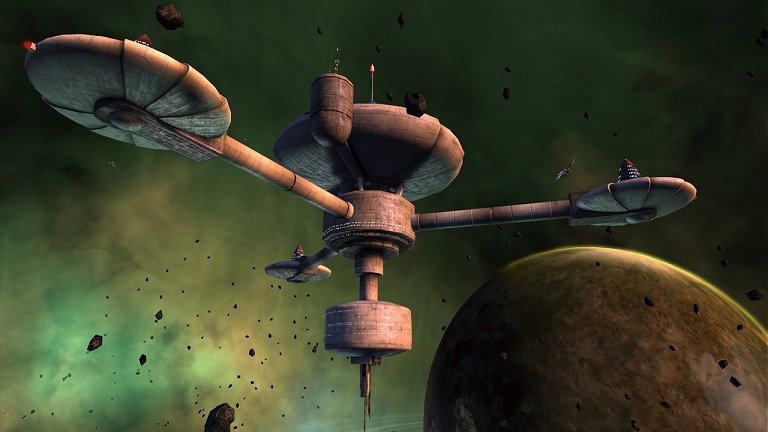 The Federation Council has evolved over time as more and more members have joined. By 2293 there were dozens of member worlds and colonies. Starfleet had a good number of space stations (such as the old K series) and just over 100 of the higher quality starbases (most of the Regula or Watchtower types and a handful of the larger mushroom spacedock type). The Federation Council has evolved alongside Starfleet, growing from the small Coalition of Planets with its half a dozen members and pioneering spirit of Jonathan Archer (like Christopher Columbus era colonialism) to the Wild West-style era of Garth of Izar and James T Kirk. Now the drive from the Federation Council is to 'tame the Wild West' and sent chains of starbases across the Federation. These starbases will create a communication network that will bring the Federation closer together (like the spread of telegraph system across the United States and Australia). This is the defining characteristic of the John Harriman and now Demora Sulu eras.
The Federation Council has evolved over time as more and more members have joined. By 2293 there were dozens of member worlds and colonies. Starfleet had a good number of space stations (such as the old K series) and just over 100 of the higher quality starbases (most of the Regula or Watchtower types and a handful of the larger mushroom spacedock type). The Federation Council has evolved alongside Starfleet, growing from the small Coalition of Planets with its half a dozen members and pioneering spirit of Jonathan Archer (like Christopher Columbus era colonialism) to the Wild West-style era of Garth of Izar and James T Kirk. Now the drive from the Federation Council is to 'tame the Wild West' and sent chains of starbases across the Federation. These starbases will create a communication network that will bring the Federation closer together (like the spread of telegraph system across the United States and Australia). This is the defining characteristic of the John Harriman and now Demora Sulu eras.
Author notes: this is the era of taming the frontier. In The Next Generation we have 718+ starbases and in Star Trek: Discovery they mentioned Starbase 88 in 2256, with displays showing up to Starbase 343. The Interim Years is about reclassifying space stations and facilities as starbases by upgrading them to certain specifications and abilities. This in turn increases communications and reduces the need for independent cowboy diplomacy and more co-ordinated, responsible actions with Starfleet Command and the chain of command. This is an almost totally new Starfleet and Federation to the one Kirk inhabited.
The legacy space stations and early starbase types are to be upgraded for the 24th Century, to be able to maintain the latest starship types. The newer members of the Federation Council - the Betazoids and Deltans to name but two - are of a more pacifistic mentality. Along with the Vulcans and Rigelians they have formed a pacifist bloc that aims to de-militarise Starfleet and learn the lessons from the protracted Cold Wars with the Klingon and Romulan Empires, to find diplomatic solutions to issues that have been addressed militarily before. The pacifist bloc has put forward proposals for the Starfleet Review of 2293 to stop the production of anymore vessels of Dreadnought (DN) or Heavy Dreadnought (DNH) classification - specifically the Federation and Ulysses classes. The Komsomolsk class construction to be slowed pending an examination on whether to cease this production as well. Only the Ascension class Light Dreadnought (DNL) and Ark Royal and Youngblood carrier classes are to be retained with their peacetime applications. The training methods of Starfleet Academy are to incorporate a greater emphasis on peace-keeping, negotiation and conflict diffusion.
Author notes: as with the debate in 2015 about the Trident nuclear system Successor programme in the UK, this is about the Federation and, in turn, Starfleet deciding on what it stands for in the 24th Century. By The Next Generation we have no dreadnoughts and warships, suggesting that between Kirk and Picard on the Enterprise, Starfleet does away with these things. A pacifist bloc has been developing in the UFP for decades and now reaches that pivotal point after Khitomer and the Treaty of Nimbus to mothball the military, rather like what was mentioned in Star Trek VI in the meeting in Starfleet Headquarters. Whilst our scientific and diplomatic missions will be unaffected, our military warships will be cut. The President, UFP and Starfleet want to find another way instead of fighting; we are explorers, diplomats and discoverers first and soldiers last - and only when we have to.
Homo otiosus - Man of Leisure. The modern person.
Humanity has moved on from Homo sapiens (intelligent man) to now be a person of leisure. in the 21st Century it was the advent of automation, artificial intelligence, smart systems in call centres and self-driving vehicles that changed everything. In a head-spinning short number of years globally, call centres were closed, taxi drivers, lorry drivers, train drivers and logistical warehouses were all automated and the human aspect was removed. Global unemployment reached levels never seen before or after. The choice for all World governments was stark and inflexible: either address the unemployment of virtually the entire Working Class (and face a global revolution and war) or redefine what it is to work; make working voluntary and free up the human race to choose what they do with their time. (This is the "evolved sensibilities" that Jean-Luc Picard is so fond of quoting about).
Thus was born Homo otiosus and the ability to study, play, travel and enjoy life that no human had ever been able to enjoy. AI agents (think Jarvis from Iron Man movies) were able to facilitate this life still further Technology became an assistant, an ally, not competition. Your AI companion wakes you at your chosen time; it tells you what is scheduled for the day. You then CHOOSE what is can book for you to do and check with the AI agents of your friends or family to co-ordinate an event together. Restaurant bookings liaise with the you for preferred seating, any food allergies and allows a smooth booking with everything catered for. Cities no longer had to cater for industrial zones and person-intensive shopping experiences. Instead, a green city with the time and ability to choose what to do, when and with whom. Technology can hepl, if asked. Otherwise, the Federation was your oyster, with Universal Translators and an economy that allowed you to move to colonies and build yourself as large a home as you want. The dream had finally arrived.
Modern Elites in the United Federation of Planets.
Despite there being a utopian vision of equality for the United Federation of Planets, where everyone is equal in a classless society, there still exist groups that could be classed as an elite class within the UFP:
1. Legacy rich. eg criminals, ex-royalty, families of former dictators, landowners and shareholders. e.g. Spock's family.
2. Megacorporations and consortiums. Technomoguls, resource moguls ie in FTL minerals like tritanium and dilithium. Tagruato corp, Massive Dynamic etc. ie Richard Daystrom and Daystrom Institute.
3. Starfleet. The Hogwartian Academy of the most gifted, that creates starship captains with political decision-making and influencing clout.
4. Senators, Governors, Ambassadors - ie the political elite.
5. Influencers - Artists, musicians, singers, poets, fashion gurus, celebrities e.g. Banksy, Rihanna.
6. Idiological/ educational elite - Professors, doctors, philosophers (and arguably conspiracy theorists).
Environmental issues and colonialism.
The United Federation of Planets is still an imperfect creation. With an ever-expanding population, covering an ever-enlarging Federation, the amount of territory and resources that the Federation needs to both house its population and run a 23rd Century culture needs more worlds colonised. From building towns and cities on virgin worlds to mining vital minerals needed for the FTL travel to keep the Federation connected; all of this results in untouched worlds and moons being changed and spoiled by the activities of the United Federation of Planets. Whilst unavoidable with the current culture of expanding populations, some in the Federation are unhappy. Protestors can be found across the Federation petitioning the need to control population sizes and recycle our resources better, rather than constantly moving on to the next world to terraform. "Terraforming is environmental terrorism", is one of the many slogans that these environmental groups use. The enlightened sensibilies of the Federation actually encourage freedom of speech like this. Whilst the Federation does have incredible technology, waste products like trilithium resin and various radioactive elements from space travel are harder to process. This has resulted in dumps to put the waste somewhere safe until the means to treat is can be developed. Starships are scrapped at dedicated worlds with nearby refinaries to recycle and reuse as much of the materials as possible. Senators and governors can end up in the firing line for both protestors and corporate lobby groups. The uncomfortable compromise position is that we still need to run the Federation the way we do until the culture itself changes to use less. Another uncomfortable truth is the political power of the core worlds far exceeds that of the colonies. In this respect, the resources to clean up the core worlds and sometimes use the colonies as dumping sites is a necessary evil. Both Vulcan and Earth had extensive nuclear wars in their histories, involving removing lots of radioactive material to clean up their worlds; it's far safer to let radiation die down over a hundred thousand years far away from populated regions.
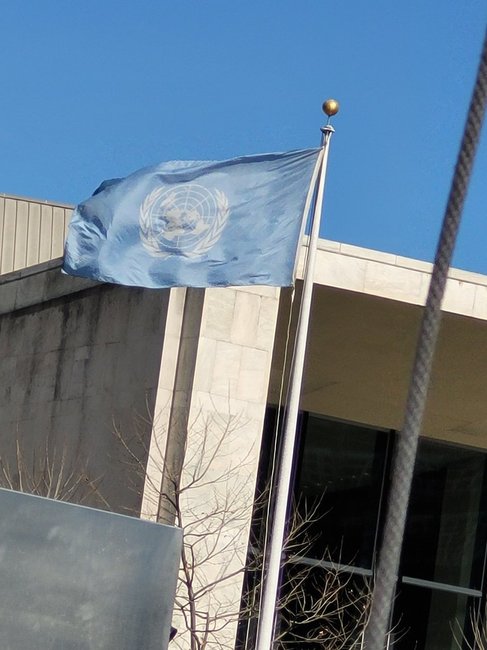 Life in the Core Worlds.
Life in the Core Worlds.
By 2293, life on the core worlds (Earth, Vulcan, Tellar, Andoria, Betazed, Delta IV, Cait, Trill, Bolia, etc.) is pretty much like in the Next Generation. Since the 2280s movie era, Starfleet has expanded their starbase network from around 70 starbases to nearly one hundred. From the perspective of living on the core worlds, the Federation is their equivalent of the European Union or United Nations – a giant entity that incorporates many peoples and nations. With the frontier a distant concept, the core worlds see themselves as the political powerhouses of the Federation. Earth has the majority of the Federation political structures based there and is, arguably, the capital world of the United Federation of Planets. The large populations on the core worlds argue for a more representative vote in the Federation Council to account for their percentage of the population; colony worlds and smaller entities being arguably less eligible for an equal vote as how can a world of a few million life-forms have the same say in Federation affairs as a core world with 10 billion? These core worlds have diversified their populations as the Coalition of Planets became the United Federation of Planets. On any given street there may be a dozen different species as people from other worlds come to live on Earth to be near the Federation Council, Starfleet Command, Starfleet Academy and many other principle facility of the Federation. Not everyone is happy at the percentage of humans on Earth being diluted by the influx of other cultures, some choosing to create their own nostalgic recreations of old Earth on other colonies. Truth is, the diversity has brought in a universal perspective, new languages, new ideas and great food. With Earth now pretty much maxed out for population, the drive for colonising and going off-world is at a high. Starfleet is seen as the way out for many, but settling the colonies can offer challenges of its own. Some still like the comfort and history of the core worlds, with their thousands of years of back-story.
The core worlds have shipyards, spacedocks and starbases orbiting above them. Many have fleet headquarters for one of the nine numbered fleets. Newer core world members like Cait and Betazed maintain their influence over their local space but now as part of the Federation. These regions of space are familiar to the local core worlds, the colonies in the region tending to be settled first by local indiginous species. The Fourth and Fifth fleets have been created for Starfleet based around these newer worlds in the rimward direction of the UFP. As these newer members have been added to the Federation Council, the very nature of the Federation has continued to evolve from how it was at its inception. As the Federation grows, so the perspective of a member world changes from introspection of its own international affairs to a larger scope of the internal Federation affairs; this in turn covers an ever-increasing area as the frontier is pushed back. The numbers of senators in the Federation Council increases as new core worlds are added. Gaining consensus in the council is harder, with more and more perspectives being added to the group dynamics. The truth, spoken only behind closed doors, is that the United Federation of PLanets has struggled to keep up with the speed of expansion, and the vast distances that it now covers. For an entity that takes months to cross at warp speed, the CommPic Hyperchannel network is vital in keeping the whole together. The new species and worlds joining the Federation means the composition now bears little resemblance to that of even a few decades ago.
As the subspace network has been enhanced and real-time communications are expanded from the core planets outwards to the colonies, so the Federation members as a whole have been drawn together socially. Whereas in the 2260s the missions of the Enterprise, Hood, Yorktown and others made the Federation news services as they explored the outer regions and made first contact with worlds, those same worlds are now established members and colonies. The core worlds of the UFP continue to exert the greatest influence on the direction of the Federation Council, but as more core world members are added, this individual influence is being diluted down over time. Core worlds have most fo the mega corporation headquarters based there; the big cities can often be dominated by skyscrapers for Taguato Corp, Massive Dynamic, Daystrom Institute and others. The core worlds are the poster children for the Federation ideal: big parks, resorts, restaurants, hotels and perfect beaches. The ideal life is shown as the blueprint for the colonies to follow. Historic sites mingle with modern bars and nightclubs for listening to the local indiginous DJs playing the latest local music. This gives localised differences to the vast Federation collective.
With the over-populated coreworlds diversifying in species composition, and everyone's ideal of utopia being individual, the driving advertisement seen everywhere is to emmigrate offworld. The colonies are depicted as the true opportunity to have a big house, large lands and to build the ideal future that you want.(Not unlike in the movie Blade Runner (1982). There are a lot of future aspects of cyberpunk that hold true to the Star Trek universe). The influx of alien species changes the feel and dynamic of these core worlds, for the enjoyment of some and the disapproval of others. Emmigration allows the individual some cntrol over their home. Maybe recreate a lost ideal home, or create a new utopia in your beliefs. The only limiting factor being the Federation laws.
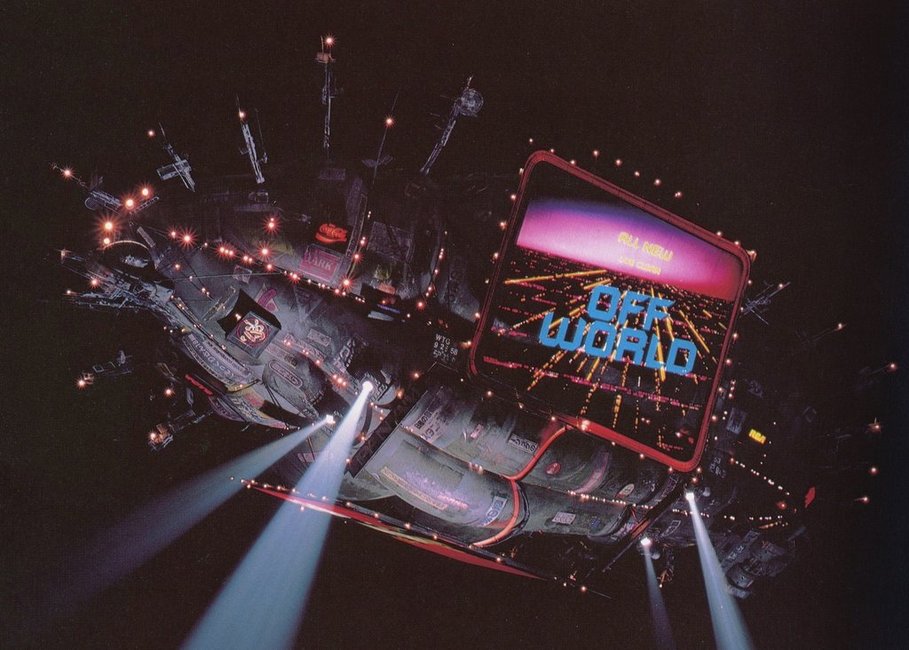
As seen to the right, the flag of the United Nations, indeed the United Nations itself, is the primary inspiration for the United Federation of Planets. Refinements to the original concept are inspired from the European Union.
Membership of the United Federation of Planets requires a nation world or system to align their overall cultures, laws and economics with the guiding constitution of the Federation. Like the EU, there's a common currency and Federation Standard is the lingua franca of all worlds and colonies. Starfleet covers members for exploration, diplomacy and defence. The ethical guidelines of the planets must, in certain cases, align with the Federation: no death sentences and a policy of gender, religious, belief and sexual equality. There must be no cultural caste system and freedom of movement across the Federation.
As per the Federation proposal to the Barzans in TNG The Price: the currency is the Federation Credit. Membership means the Federation 'pays' for the orbital space facilites ie starbase and spacedock; the Federation assists with technology, education and economic needs - this includes medical technology. Local population to be the principal staff of any ground-based facility (so Starfleet has a cultural and alien mix on the space facilities, but your home world is principally people of your own species). Warp drive capable worlds meet the Prime Directive for first contact; technology is boosted, upon membership acceptance, to Federation standards (as seen in Strange New Worlds episode 1.01 of the same name.) which in most cases is a jump from mid-21st Century equivalent to state-of-the-art current (a jump of over two centuries, that gets bigger with passing time, if this policy if kept in ST: Picard etc. ). The Federation would require ethical guidelines to prevent the culture joining from being overwhelmed by the technology jump. Also ethical guides for medical and defence technologies. Imagine, for example, people from 1825 with steam locomotive Locomotion number 1 as state-of-the-art technology with post delivered by stagecoach and sailing ships of the line like HMS Victory, being given the internet, fMRI scanners, CRISPR genetic manipulation, space probes, satellite tv, global live-streaming social media, aeroplanes, smart phones, nuclear weapons and yet only having the ethical guidelines, and technological understanding, from the Victorian age? This is the equivalent issue that the United Federation of Planets MUST address. THIS is what Starfleet overwhelmed the Vau N'Akat people with in Star Trek: Prodigy?
The implications of going from today's technology to Star Trek transporters, phasers, warp drive and medical technology is that the current human race has the ethical guidelines of rich people wanting to make money, dictators wanting to amass power and revolutionaries wanting to destroy cultures that are perceived to challenge their own. The guidelines of first contact procedure must balance out the acquisition of warp technology with the ethical responsibility of boosting a world up in EVERY RESPECT, how that will CHANGE that world and its cultures as they jump a couple of centuries of development. The almost-blase attitude of Star Trek shows up to the Berman-era in stating when we meet a world with warp drive we can justify joining them to the Federation, boosting their technology to our own cutting edge level. All f this is done without learning the RESPONSIBILITY of having the earlier steps in the technology and understanding the ethical arguments in having the technology. There is no tailored technology swap (that we know of), this is a all-or-nothing boost from membership.
Many UFP aspects inspired by Admiral Marcus’ powerwall from STID.

Life on the Frontier.
Federation colonial life is very different from living on one of the core worlds of the Federation. Core worlds have senators, and representation in the Federation Council; colonies have Governors. Whilst the Federation President can pass laws through the senators and the Federation Council, it is down to the Governor to run their colony, and interprete the federal laws from the Federation Council. The Federation Colonial Service, and it's leadership team, advise and guide the Governors and colonies on the legalities that must be upheld if you are to maintain Federation Colony status. A Governor is free to design and run a colony anyway they want, provided that they uphold and adhere to the federal legislation from the Federation Council. Failure to do so will result in sanctions, leading up to the suspension of Federation membership of the colony. A senator debates and votes in the federal laws of the United Federation of Planets. A Governor interprets these laws and incorporates them into the running and local laws of the colony they preside over. There is a local law versus federal law balance. Local laws apply to just the individual colony, and are different across the Federation. Federal laws apply across the United Federation of Planets, and are manditory requirements for UFP membership - and all of the perks which that brings. Colonial laws can forbid items and allow things, as long as they are within the constraints of federal laws. Augment technology is banned across the Federation, for example. The debate of federal law over colonial is a central interest following the meeting of the Federation and Klingon leaders at Khitomer; to resolve the Neutral Zone disputed border, worlds will need to be ceded to one or other of the governments. What is the legal mandate of involuntarily withdrawing the federation membership of a colony? And what if the colony refuses to swap to the other government? In addition to the Governor, there may be the presence of Federation or Starfleet facilities on the colony. The Starfleet facilities run under Starfleet regulations, under federal laws and adhering to the specifics of the colonial laws. There may be a commander, captain or commodore running the Starfleet facility. They answer to the chain of command back to Starfleet Command headquarters. The Governor may make a request of the starbase, Starfleet facility or starship in their locality, however they cannot command them directly. If the governors want Starfleet to take an action, the usual oute is to petition the Federation Colonial Service to request Starfleet act. In more urgent cases, the colonial Governor may directly contact heir sponsoring world's Senator to bring the matter up in the Federation Council. Starfleet facility commanders and starship commanding officers may similarly ask the governor directly what the colony needs/wants and, under Starfleet regulations, they may act directly according. With the core worlds having senators and the colonies having governors, it can be said that colonial Federation citizens can feel like second class citizens with less influence over the running of the Federation Council, compared to a citizen born on a core world like Earth, Vulcan or newer members like Betazed. Colonies are run by the governor and a team of mayors that will run the individual settlements on the colony. A Colonial Police Force will address the rule of law on the colony itself, with the oversight of Federation federal organisations such as Starfleet Security and Federation Security. Colonial medical facilities and services are overseen by Starfleet Medical.
The life of a colony depends entirely on the colony supplying something for the greater Federation: whether an M-class planet for populating and spreading out the ever-expanding populations of Humans, Vulcans, etc. that have long outgrown their home worlds. Colonies can also supply raw materials for the expansion and operation of the Federation itself: from iron, aluminium, rare earth metals to the resources of interstellar space travel: dilithium, tritanium and duranium. When these resources are plentiful, the colony thrives; when they are exhausted, the colony may decline or even expire with them. Planets may also be used as farm worlds or factory-industrial worlds for the manfacturing of everything from starship components to colonial atmospheric processors for terraforming. With Federation membership comes the umbrella of Starfleet: patrol vessels are sent to keep the peace and show the flag. Okinawa, Akula, Repulse, Scimitar, Saladin, Miranda or Pioneer class starships can be sent to reinforce the brand of the United Federation of Planets, enhancing the feeling of being a part of the bigger political entity. Transport ships connect the colonies both to each other and to the core worlds. These transports are a lifeline to ensure the colonial repairs and maintainance can be upheld, as well as transporting families or resources off the planet too. When the colony declines, these connections can be wound down as well, encouraging the population to move to a more prosperous, thriving colony. This is the normal evolution of the United Federation of Planets. The Governor has control over the colony with as much authority as the President has over the Federation; this had it's downsides with the Tarsus IV famine, that resulted in the needless deaths of colonists at the orders of Governor Kodos. Colonial identity and education are dependant on the make-up of the population. History that is taught is either from the cultural roots of the inhabitants, or general United Federation of Planets history from 2161 to the present; again reinforcing the universal corporate brand. Colonial politics are seen mostly as the Governor and mayoral activities and votes, rather than the more-distant federal politics of the United Federation of Planets on distant Earth. At times the federal government is seen more as a distant, interfering organisation rather than something that you are a part of. The wants and needs of a colony can seem distantly removed from matters of interstellar law and pangalactic political drama. This can feel very much like the historical feelings of Scottish people believing that the UK parliament in Westminster, England, interferes in the running of Scotland. That is without taking this analogy further and speaking of how British people living in Gibraltar, Ascension, St. Helena and the Falkland Islands feel about the UK Government running their affairs for them from thousands of miles away. Unlike core worlds, with many thousands of years of cultural history, colonies may only have decades or even a few years' worth of history. No famous monuments or identity beyond the UFP flag and corporate chains of corporations, stores and restaurants such as Massive Dynamic, Bold Futura, Yoshida Medical Research (YMR), Slusho!, Tagruato, the Daystrom Institute and the Dharma Initiative. Indeed, many of these companies may have sponsored the colony and been involved in its design and creation, or the colonies may have been created for corporate requirements, being affiliated to the United Federation of Planets for the benefits of Starfleet, etc. These super corporations see 'their' colonies as nothing more than assets for furthering the work of the corporation, their headquarters usually hundreds of light-years away on core worlds. This allows a level of autonomy for the colony and its 'benefactor', as well as a degree of plausible deniability in a handful of cases.
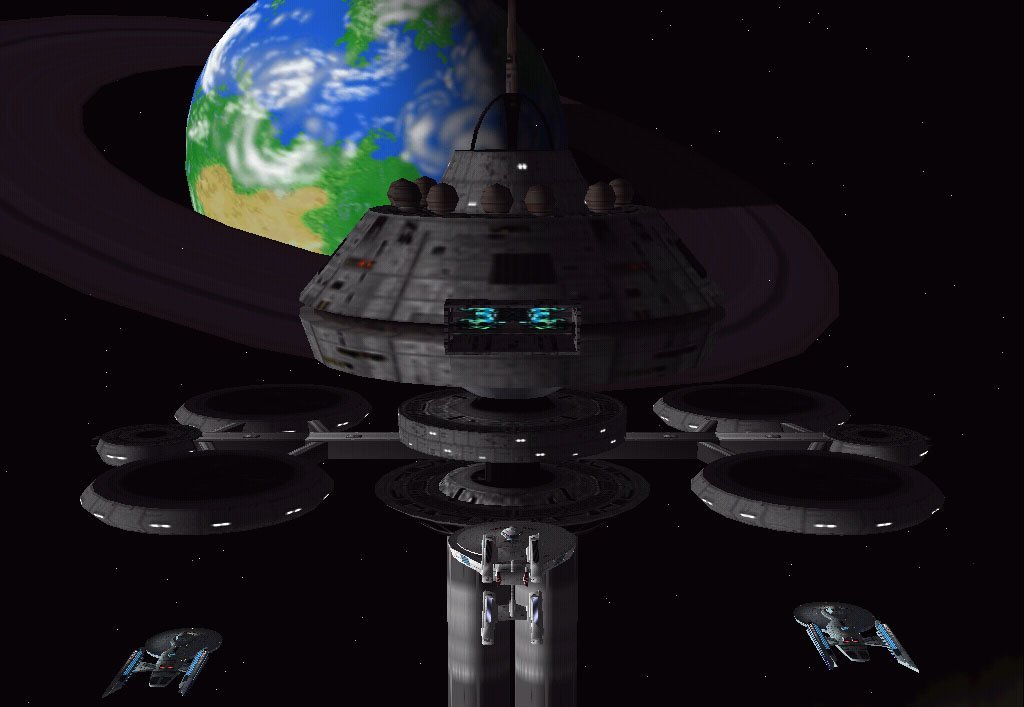 The Federation is still going through a period of growth, and growth is painful. Picard's Federation is still 70 years away, and the message that will eventually permeate the Federation is still spreading outwards, like bubbles in a soft drink. The dream will be realised, it is only a matter of time. Outer portions of the Federation, such as the driftward 'Eastern' region were only colonised around the time of the voyages of the U.S.S. Kelvin in the 2230s, 40s, and 2250s. These worlds include: Poseidon the water world, Radley's Reach - an L class mining colony and starbases 6, 15, 36, 52, 105 and 123. This region of space is to the core Federation worlds as the Falkland Islands are to Britain or Guam is to the United States of America. They are loyal to the flag, aspiring to the ideals but life is less cosy and much less safe. It is easy to be British in London, or to be American in New York, but when you are on a part of sovereign territory far removed from the source, life is not the same. How easy is it being, or feeling, British in Port Stanley on the Falkland Islands? A very different experience when Queen and Government lies thousands of miles away. So it feels in this distant corner of the Federation.
The Federation is still going through a period of growth, and growth is painful. Picard's Federation is still 70 years away, and the message that will eventually permeate the Federation is still spreading outwards, like bubbles in a soft drink. The dream will be realised, it is only a matter of time. Outer portions of the Federation, such as the driftward 'Eastern' region were only colonised around the time of the voyages of the U.S.S. Kelvin in the 2230s, 40s, and 2250s. These worlds include: Poseidon the water world, Radley's Reach - an L class mining colony and starbases 6, 15, 36, 52, 105 and 123. This region of space is to the core Federation worlds as the Falkland Islands are to Britain or Guam is to the United States of America. They are loyal to the flag, aspiring to the ideals but life is less cosy and much less safe. It is easy to be British in London, or to be American in New York, but when you are on a part of sovereign territory far removed from the source, life is not the same. How easy is it being, or feeling, British in Port Stanley on the Falkland Islands? A very different experience when Queen and Government lies thousands of miles away. So it feels in this distant corner of the Federation.
The driftward, or 'Eastern' side of the Federation lies beyond Klingon space in the Beta Quadrant. This portion of space was colonised once the Romulan Star Empire retreated behind their Neutral Zone and allowed Starfleet the freedom to explore this region. The home of the Ninth Fleet of Starfleet resides at Starbase 15: Pharos. This base is located at Canopus on the fringe of the Federation; from here the legendary five-year missions prepare and set off, and mostly always return. Enterprise, Hood, Lexington, Yorktown, Excelsior, Darwin- these and many more legendary starships have travelled through this starbase to head off into the unknown. Originally a Forward-Deployed element of the Second Fleet was assigned here to defend the region, this became the Ninth Fleet.
Starbase 6, along the Klingon border, predated the Pharos station. This started as a Watchtower class starbase before being updated. It was from Starbase 6 that the Excalibur and the ill-fated M-5 Computer Battle Simulations were deployed. Along the border is Starbase 36 which aids in deploying vessels to patrol the Klingon Border, although these days it is more a precautionary deployment more concerned with smugglers and illegal immigration across the border than actual attacks from Klingon warships, although the attack on Starbase 11 in 2298 showed this is still a hazard.
This driftward region of the Federation is reached through the Nirophian Corridor. Often described as the Suez of the Federation, this narrow access allows Starfleet ships access from the core Federation worlds to this region without having to circumnavigate either Klingon or Romulan space. It cuts valuable time off the trip. To secure the Corridor, Starfleet has a starbase at either end: Starbase 77 on the coreward end and Starbase 52 on the driftward end. These bases regularly deploy Apollo and Akula class ships to ensure the security of the Corridor, protecting the hundreds of freighters that traverse the connection to deliver valuable trade to and from the frontier. With Orion, Klingon, Ch'ramaki and Ferasan space all within easy reach of the Corridor, security is paramount in Starfleet's concerns.
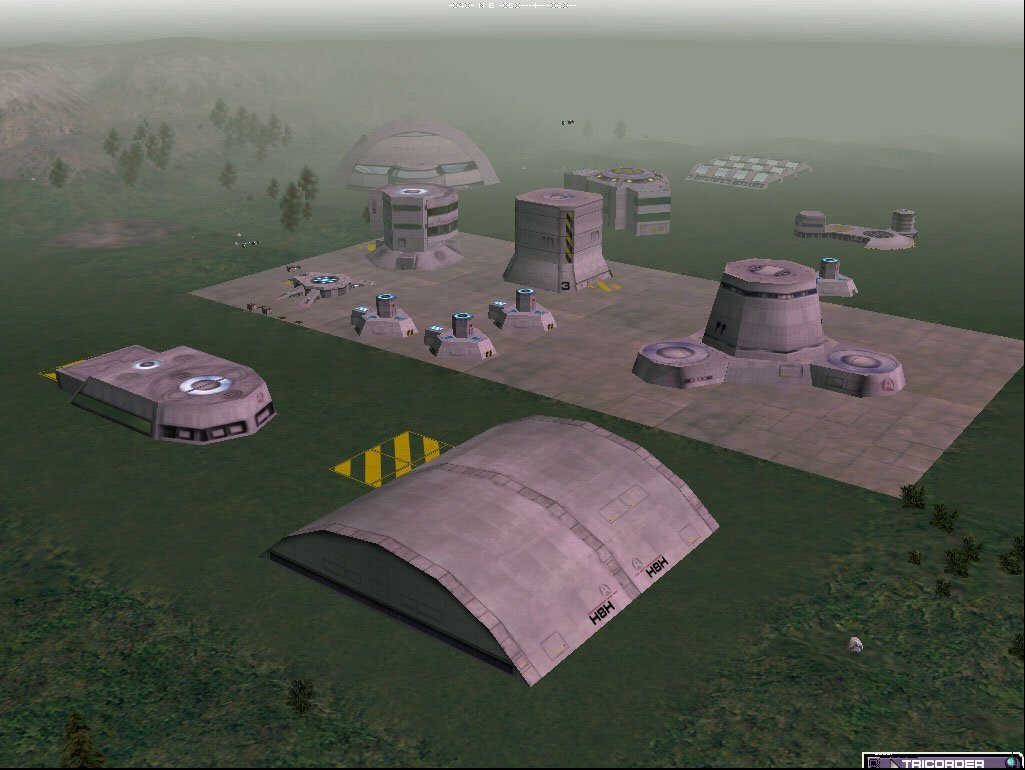 Poseidon is a water world that is rich in rare minerals, it was colonised early on in the region by traversing the 'long way around' from Klingon space. When hostilities flared up, the world was left to its own devices for years. Poseidon was regularly traded with once the Nirophia Corridor was established. In the meantime, the planet had become a playground for less-desireable criminal elements and some of the rare minerals on the planet had been found to have narcotic effects. This has - and still continues to - cause Starfleet concern about maintaining the ideals whilst criminals ply illegal drugs across the Federation from this colony. Technically now a Federation colony once more, the drugs trade is still alive and kicking. Author's note: adapted from the superb RPG Blue Planet.
Poseidon is a water world that is rich in rare minerals, it was colonised early on in the region by traversing the 'long way around' from Klingon space. When hostilities flared up, the world was left to its own devices for years. Poseidon was regularly traded with once the Nirophia Corridor was established. In the meantime, the planet had become a playground for less-desireable criminal elements and some of the rare minerals on the planet had been found to have narcotic effects. This has - and still continues to - cause Starfleet concern about maintaining the ideals whilst criminals ply illegal drugs across the Federation from this colony. Technically now a Federation colony once more, the drugs trade is still alive and kicking. Author's note: adapted from the superb RPG Blue Planet.
Bold Futura's PV-422 is a corporate world that is owned by the research arm of Tagruato Corporation. The planet is more commonly known as Radley's Reach, an L class world rich in rare minerals. Bold Futura has invested heavily in the colony, building an atmospheric processor which is converting the air of this 'shake and bake colony' into a breatheable one in the next few decades. The planet itself is devoid of life and has frequent dust storms with electrical qualities to them. Freighters frequent the planet from the parent company to both deliver new colonists and employees whilst removing the latest load of ore and profitable materials. The colony is currently expanding and building ore processing facilities to cut time on having dilithium and duranium ready for collection. Facilities at the colony are best described as 'rough and ready' but they are constandly improving. Starfleet rarely visits the planet but does occasionally send a flag-waving expedition to check the colonists are ok. Author's note: based on James Cameron's Hadley's Hope colony from Aliens. Bold Futura and Tagruato Corp are from JJ Abrams' Cloverfield.
Gateway Colony is one of the Federation's main immigration colonies. Located near Starbase 15, the colony is designed to be a catch-all for all immigrants crossing into Federation space in the Beta Quadrant. Like Christmas Island for the Australians, Gateway Colony allows specialist xenologists to study the new arrivals, educate them to the Federation and it cultural and social laws whilst learning as much as they can about the new lifeforms and their requirements. The colony is designed to locate worlds in the Federation upon which the new arrivals can settle. Due to population concerns in the core worlds, the new arrivals tend to be directed either towards existing colonies on the outer reaches or to new untamed planets to have for their own as new members of the Federation. Conditions on this rapidly-expanding immigration colony are said to be the best but recent riots have shown that the colony is struggling to keep up with the sheer numbers of new arrivals. Add to that elements of Ch'Ramaki and other terrorist factions crossing into Federation space for protection and the scope for trouble on the colony is high. Starfleet keeps a squadron of Okinawa and Apollo class ships free to address rapidly any trouble that might flare up.
Established in the 23rd Century, this colony was a centralised location to process immigrants in order to accept them into the Federation or to decline their entry. The colony was intended to be there for several thousand immigrants, but has doubled in size over and over and is now the largest immigration site in the Federation. The colony has had rioting over conditions as recently as 2309 and is a political hot potato. The Canopus system residents are ‘very uncomfortable indeed’ with the presence of the ever-growing immigration centre and are increasingly pressuring their Federation representative to get the colony closed down and moved to a new site on the border or outside of the Federation. A political bloc is emerging in the Federation Council with this objective in mind.
Doctor Elizabeth Hawkins has been at the Gateway colony for the last few decades. She brought her young family to the colony in the 2270s when the colony was a fraction of the size it is now. Doctor Hawkins witnessed races such as the El Aurians escaping from invasion, others like the Ch'ramaki and Terajuni escaped from annexation by the Klingons. This in itself brought complications as races accused of acts of terrorism joined the colony populace. The medical centre at the colony grew as exponentially as the colony itself, having to deal with biology and diseases that no one in the Federation had encountered before. The good work and new knowledge that the colony was constantly generating was buried by the controversial news headlines of the state of the ever-expanding colony. The medical and administrative centres were caught up in the riots of 2309. Whilst the administrative centre was the focus of much of the violence and deaths, the medical centre was used as a barting chip. The immigrant population needed medical facilities and doctors, not administrative bureaucrats.
Author notes: Why have an immigration colony? Firstly to provide a fair and efficient location to process immigrants. Given the size of the Federation (vast even by 2293) you need a place where the specialists can be located to give medical and administrative help and processing rather than shipping them around – which is impractical. In addition, should the immigrants have a contagion or other complication, the situation is contained in one location. Ditto in the case of terrorism. Assessments can also be made of the impact of immigration on both the fabric of the Federation and on the immigrant themselves; idly adding new peoples into the Federation can change the political and social make-up and beliefs of the Federation and could even develop into cultural clashes. These facilities see off these problems before they start. Real life case: the rise of the UKIP political party in South-East UK is due to the perceived impact of immigrants on the area. The Federation is a dynamic entity, and the addition of Deltans and Betazoids (amongst many) changes the outlook of the Federation Council (and therefore Starfleet) to the more pacifistic stance in place by TNG Encounter At Farpoint).
Arguments against the immigration centre: Gateway Colony has been shown in documentaries about the poor standard of living of the immigrants awaiting processing, the length of time taken to process the backlog of immigrant applications. The rioting in 2309 made the colony a hot potato, one successive politicians would rather have dealt with quietly or with an ‘improved’ process – although in truth these ‘improvements’ can never be agreed upon or are never clarified. The colony, quite simply, cannot be enlarged quickly enough; the colony has doubled in size in the last decade, however this has been the case for each of the last several decades.
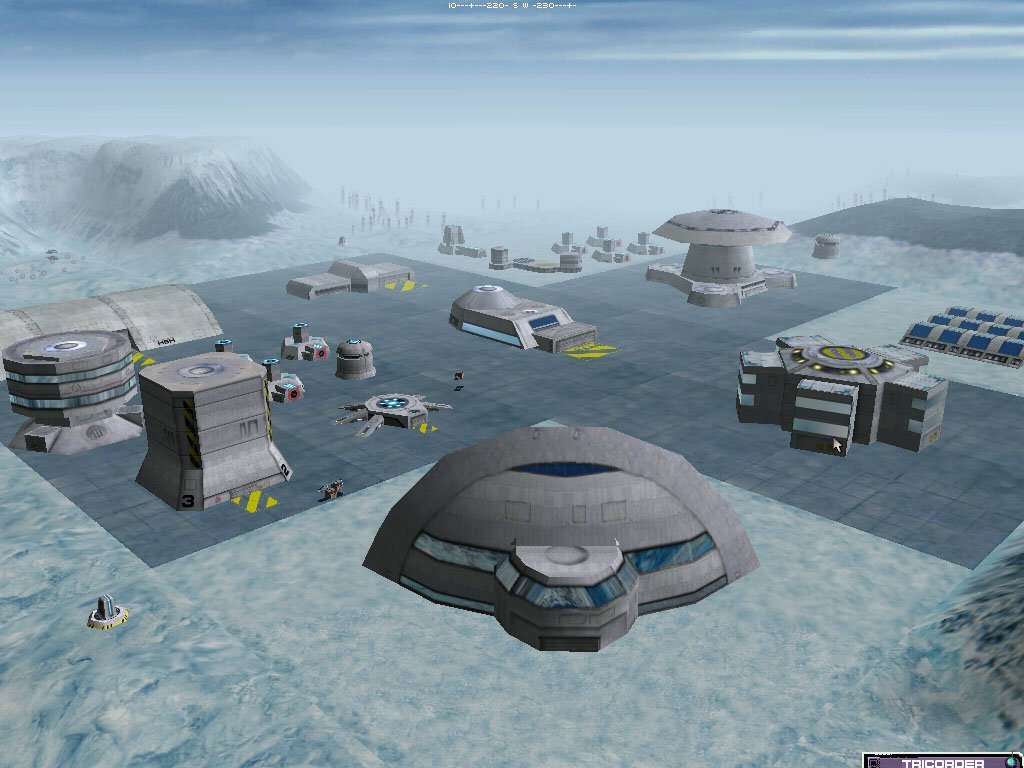 Nirvana Colony, near Starbase 15 'Pharos', is a centre for psychological research and a colony for the recuperation of both Starfleet and Federation members requiring specialist psychological counselling and treatments. The colony is run by the Federation Medical Council, Starfleet Medical and also private corporations such as the Dharma Initiative and Massive Dynamic sub-corporation ExtenzaLife have facilities and personnel here, developing the RealMe range of products. The best psychopharmaceutical treatments are available here as well as skilled neurosurgeons. As with the Tantalus Colony, this world helps those with psychological trauma to recover and return to their lives. The colony has a curious mixture of medical recuperation centre mixed with a pleasure resort for the relaxation of those with psychological trauma and those just wanting to relax and unwind. Many Deltans, Aenar, Vulcans and Betazoids can be found at this colony; Starfleet assigns personnel from long-range missions to these colonies for a few weeks after their missions as a matter of course to determine the wellbeing of their crews. Starfleet has a duty-of-care to any traumatised by their experiences on the final frontier.
Nirvana Colony, near Starbase 15 'Pharos', is a centre for psychological research and a colony for the recuperation of both Starfleet and Federation members requiring specialist psychological counselling and treatments. The colony is run by the Federation Medical Council, Starfleet Medical and also private corporations such as the Dharma Initiative and Massive Dynamic sub-corporation ExtenzaLife have facilities and personnel here, developing the RealMe range of products. The best psychopharmaceutical treatments are available here as well as skilled neurosurgeons. As with the Tantalus Colony, this world helps those with psychological trauma to recover and return to their lives. The colony has a curious mixture of medical recuperation centre mixed with a pleasure resort for the relaxation of those with psychological trauma and those just wanting to relax and unwind. Many Deltans, Aenar, Vulcans and Betazoids can be found at this colony; Starfleet assigns personnel from long-range missions to these colonies for a few weeks after their missions as a matter of course to determine the wellbeing of their crews. Starfleet has a duty-of-care to any traumatised by their experiences on the final frontier.
Starfleet has pursued a policy of building new starbases with 105, 117 and 123 just the latest to come online with more to follow. Starfleet has also exhausted a large quantity of resources building the Cassandra Array - a listening and surveillance facility of vast proportions in the middle of the driftward Federation. This facility passively eavedrops on transmissions from further afield such as the Klingon Empire and Romulan Star Empire. It is believed these nations have their own versions of this Array. Starfleet Intelligce uses this facility to scan into space and try to prevent any recurrance of the invasion. Hopefully the array will detect any approaching attack fleet in time for a coordinated response to meet and defeat the intruders.
Tholian border
This is a region of space with a 'thinning' of space-time (like within the Tholian Assembly). This produces anomalies not seen outside of the Delphic Expanse in Archer's time or the Maelstrom near Starbase 12. The Federation Science Council has a focus on the region, sending Magee, Archer and Oberth class starships in numbers. This region also highlights how there is no red line where the Federation runs out; it slowly fades away as you leave the Federation.
Starbase 84 - (spacedock mushroom) Fourth Fleet headquarters over Cait. This is the main base in the region and has dreadnoughts of Nimitz (U.S.S. Jellicoe), Ascension, Komsomolsk and Ulysses classes. The regional science, diplomacy and exploration missions are co-ordinated from here.
Starbase 35 - (watchtower class) - Local starbase for resupply and shoreleave.
Science Station y 3. (See below).
Lambda and Kappa Monitoring stations - mirror copies of the Delta and Epsilon stations along the Tholian border.
K station K-14829. This is the last real command out here. An overweight, aging commodore, past their prime, fattened by inactivitity and posted far out to still feel relevant although actually a backwater world posting (Think of Major Fambrough of the outpost in Dances With Wolves). From that movie script, he had: "sad, swollen eyes. He is an army lifer passed over too many times for promotion and right now does not look like a well man" and, "Sweat has broken out all over him. His grooming is awful. His hands are trembling slightly. Something is very wrong with him." An alcoholic perhaps. The Starfleet version of Korrd on Nimbus III. A first generation Belknap class acts as flagship. There aren't dreadnoughts out this far. The frontier isn't the glamour of Pike, Kirk, Sulu or Harriman; this is the sheer graft of the frontier, setting up a crude homestead for yourself. Starships like the Excelsior or Enterprise-B only come here for the prestige of virgin territory or diplomatic functions showing the flag.
Supply Station 6965 - local cargo ship co-ordination base. Last Federation presence. A Lieutenant Commander is in charge of this base. Grimey and functional, this orbits a gas giant with deuterium and supplies for Federation explorers and scouts. Unreplicatable parts here like warp nacelles. Lots of engineering division personnel like the the K-station. This is the first and last step into Federation space for the starships out here (officially). Plenty of opportunities for fresh new officers and seasoned veterans winding down, yet wanting to remain on the frontier. This is where the Starfleet and Federation influence finally fades away. Beyond here is unexplored space, 'thrillseekers', tomb raiders, smugglers, pirates etc. The crew of Supply Station 6965 is led by a lieutenant commander, with a mix of green newly-graduates, misfits, exiles and drifters. A rag-tag, motley crew.
Communication station Kappa 071589. Mostly-automated Subspace Commpic Hyperchannel boosting station.
Macy's Station - Non-Starfleet. Further out than Supply Station 6965. Visited by Klingon Raptor, Bird of Prey (2280s versions and 2151 versions like L'mak's Duj Puj can be found here), D-5 and D-6 starships as well as Starfleet scouts and science vessels. Starfleet Corps of Transport sends Ptolemy-variant tug/transports here. Okinawa class corvettes are the most common Starfleet ships.
Old Glory station - Constructed from the remains of former Starfleet starships moored together. The commander is former Starfleet, pining for lost days of exploration.
Phillipa's Prospect - mining dwarf planet.
Mack's World
Ula'El'Tumbra - Neutral world undergoing Prime Directive-led cultural repairs by Starfleet social scientists, after disasterous mission by the U.S.S. Huainan in the 2270s.
Kolacorea - neutral world exploited by the Orion Syndicate in the region. Used as a safehaven from the Federation and Klingon fleets as well as a trading planet. Think Pirates of the Caribbean and the Port Royal.
Bold Futura station 91. Corporate non-Starfleet station for their own scout ships. Away from UFP oversight and ahead of the competition.
VZW-31 - Unaffiliated supply base.
Hades 994. Super-Earth in a volcanic state with lava geysers and black basalt flows. Oberth class Tereshkova investigating this super-sized proto-planet.
Eleanor's Eden - Tropical rainforest world exploited for medical potential. Small medical laboratories dot the jungles.
Papa Lambda Foxtrot 99275 - Dwarf planet that has Tholian scout and science (?) vessel activity. Tholians are up to something, unknown what that is. Starfleet Intelligence is discreetly monitoring the activity.
B'chel's asteroid field - independent mining operation close to the Tholian border.
Science Station y 3:
On a super-Earth sized (x15 Earth) Class H desert world near the Tholian border near the Taurus Reach, there is a subterranean science station that has been constructed by the Starfleet Corps of Engineering over a couple of decades. The station has been painstakingly built in the +2g environment around a naturally-occuring 'weakness' in space; due to the complexity of building the station around such an unknown phenomenon, this took from 2277 - 2294. This underground 'thinned' space was detected by a Hermes class scout in 2270. Several workers were lost to the unknown entity during construction, never to be seen again. The hostile gravity and atmosphere outside requires a specialist suit. The teams are both studying the phenomena in person as well as analysing why the Tholians are drawn to such phenomena. They are made up of mostly scientists and engineers along with medical division. Security presence includes the standard security division, supplemented by some Starfleet commandoes. There are about 120 personnel on the base with 27 of them social sciences,including linguistics, sociologists, biological psychologists and quantum psychologists liaising closely with biologists, exo-biologists and geologists. The Tholians are said to be aware of the manipulation of the phenomenon, but have made no matter of this and not been hostile towards the station to-date. This station is classified and the only visiting starships are transports, cargo ships and the occasional Oberth or Magee class science vessel. The station is commanded by a captain of science division.
The science station studies some exotic and fringe sciences including Chaos Theory, Game Theory, Free Will, Quantum Physics, Quantum Biology, Quantum Psychology, Systems Biology, Synthetic Biology, Singularity and Subspace Physics. The teams are there to examine the phenomenon in all aspects. This has ramifications on the Tholians, their culture and mindset; the Defiant Incident of 2268; the Vanguard Files of the 2260s; the 'mirror universe' files from both Discovery and the Enterprise as well as other potential multiverse factors. There are ethical issues of the manipulation of the multiverse and potentially disasterous effects on this universe. The crew are diverse, including one of the few Aenar in Starfleet - Vheriel. The primary mission is to understand the Tholians better and the nature of their space. Spatial anomalies, like the one here, are thought to reside in the core of Tholia, keeping it molten. There are temporal effects near these anomalies - time acts 'funny'. The Tholians are aware of the activity; this is a two-way portal. A self-destruct system with a photon torpedo is installed in the station. From opening the station, it took 15 - 20 years to access the anomaly in very careful stages. It's unknown whether the anomaly 'goes' anywhere. It's like rolling an impossible-sided die: not coming up with the same roll twice over thusands or millions of throws - if ever. The station has a small number of shuttlecraft of various types and sizes. Commander Nathaniel Hawkins is assigned to this station from 2314 - 2318.
Author's Notes:
This is like Epsilon Nine or Regula One in being a science station that would 'guest star' in a film or episode. Normally this is as a Macguffin for the plot or to be destroyed like Epsilon Nine or Amargosa Station - to demonstrate the power of the threat or situation. The location of the station is one that the script might suggest:
"How close are the Tholians to this base"
"Close"
"How close?"
"Close enough that requesting a starship to come here could start an incident..."
Food, Manufacturing, Logistics, AI: Keeping a monolithic nation running.
The UFP has a state-of-the-art system of keeping itself running. The monolithic size of the Federation makes it prone to implosion, on paper. In gruth, with Artificial General Intelligent systems, automated Clydesdale class superfreighters and a logistical system at next-level complexity, means that farming worlds and manufacturing worlds can be organised ona Federation-wide scale with (almost) totally smooth operations (Orion Pirates notwithstanding). 3-d printing synthesisers and replicators enable rapid construction of buildings, vehicles and starships (think of a more basic version of what we saw in Star Trek: Prodigy).
The ECONOMIC POWER of the UFP is second to none, and the reason why it has survived Klingons, Romulans and many other existential threats. Building last-minute defences, starships, minefields, sensor nets and monitoring facilities are amongst the reasons that Neutral Zones, borders and Federation space can be policed and repaired from both natural disasters and military threats. The Starfleet force of 12000+ ships and the Federation Transport Service fleet of well over 1 000 000 freighters and transports are all rapidly and efficiently constructed by AI-controlled, automated 3-d synthesisers with modular construction. With no breaks, holidays or sick days, space dock facilities can produce freighters and Starfleet ships relentlessly all day, every day, all year. This enables losses to accidents, sabotage, piracy, war and other factors to be overcome swiftly and smoothly.
The AI systems and advanced 3-d printing synthesisers allow even far away, backwater colonies to manufacture parts, vehicles and buildings to keep the colonies supplied and running, even in the absence of regular freighters and transports (unless the AI or construction technology itself is compromised, or the raw materials it needs to operate run out). Starfleet Corps of Engineering run regular errands to colonies to ensure systems are upgraded and automated construction systems are maintained and working crrectly with the latest technology versions.
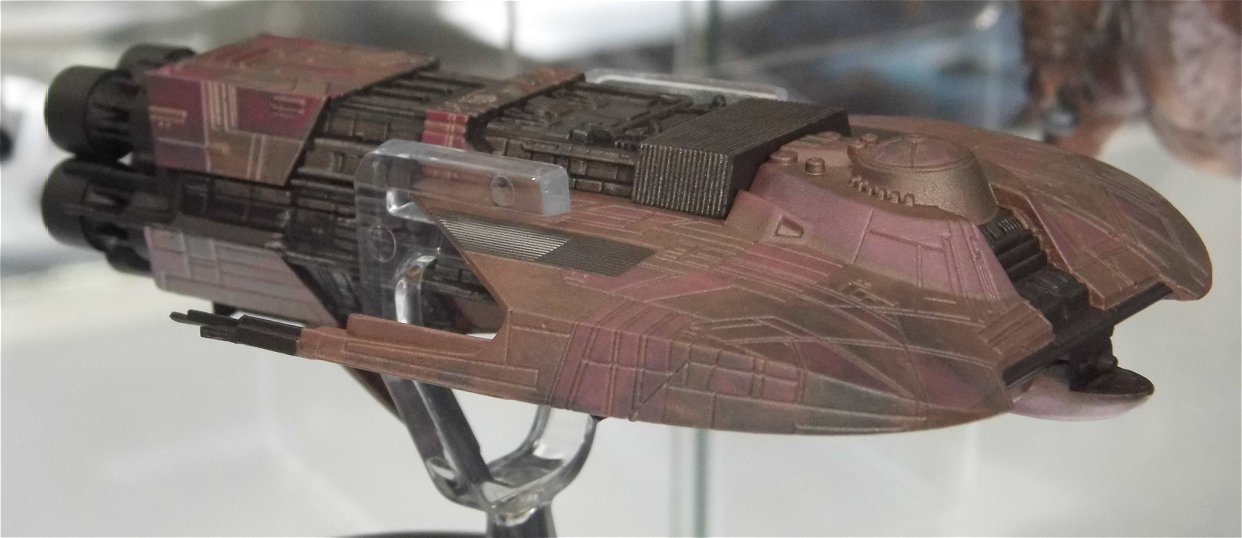
The Dark Underbelly of the Federation.
ST: Underworld aspect of the Interim Years:
This looks for the first time at life in the Star Trek universe AWAY from Starfleet; what happens to those members of the Federation who either choose or are unable to join Starfleet? What is colonial life really like? This is about the ideals of the Federation in the outer colonies where people LIVE on the final frontier. There is substantially less of the technology and glamour of the core worlds. These are the self-reliant, self-built homesteads that farm, mine, manufacture or research for the Federation.
For those children growing up on these colonies the choice is a stark one: either follow in the path your parents have determinesd and live a life of building your colony: something that will take generations to achieve, or strike out on your own to either join Starfleet, the merchant marine or go into the private sector. Get a ship of your own and trade where you can. Join the Orion Syndicate or go independent at your own risk. Go for the big win and avoid the patrol ships of Starfleet. Use your wits to eveade their superior sensors, speed, weapons and training.
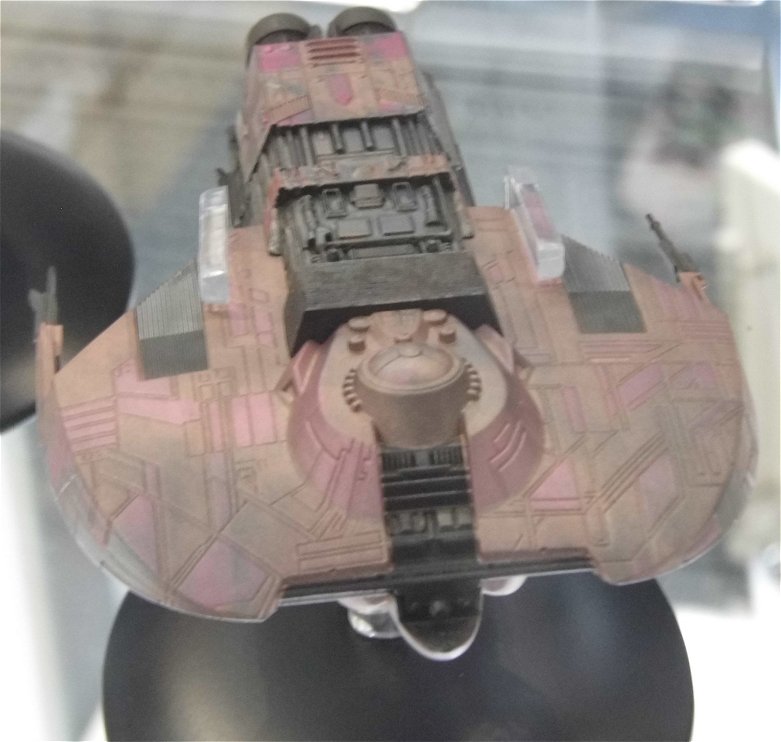
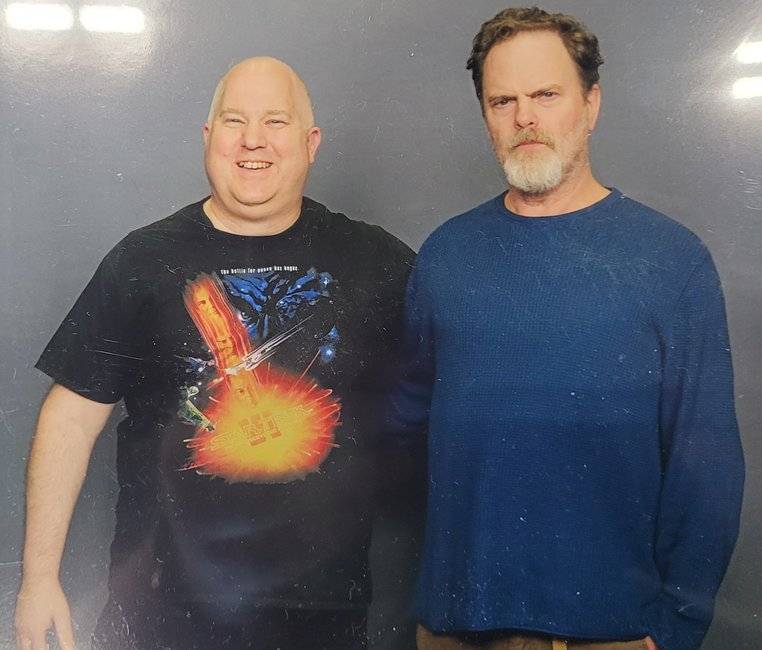
Harry Mudd, Thadium Okona and Kassidy Yates all took this lifestyle to varying degrees with the Stella, Erstwhile and Xhosa as their loyal steeds. This series will look at the 'other' side of the Star Trek universe from the one that we're used to. Looking at illegal trading, trafficking, narcotics and the realities of colonial life away from the core worlds and founding colonies like Deneva and the Rigel Colonies. The truth is, like those who built log cabins in Canada, Alaska or Siberia, this is a harsh life that will determine the path for your children, grandchildren and great-grand children. Is it fair to do that? Not to mention the most impostant question that Star Trek really hasn't answered satisfactorily: What do people do that don't join Starfleet...? Away from those Star Trek tech Starfleet bases and core worlds, there isn't all the fancy tech beyond a 23rd Century generator, recycler and food synthesiser. The rest, with help from Starfleet, is up to you.
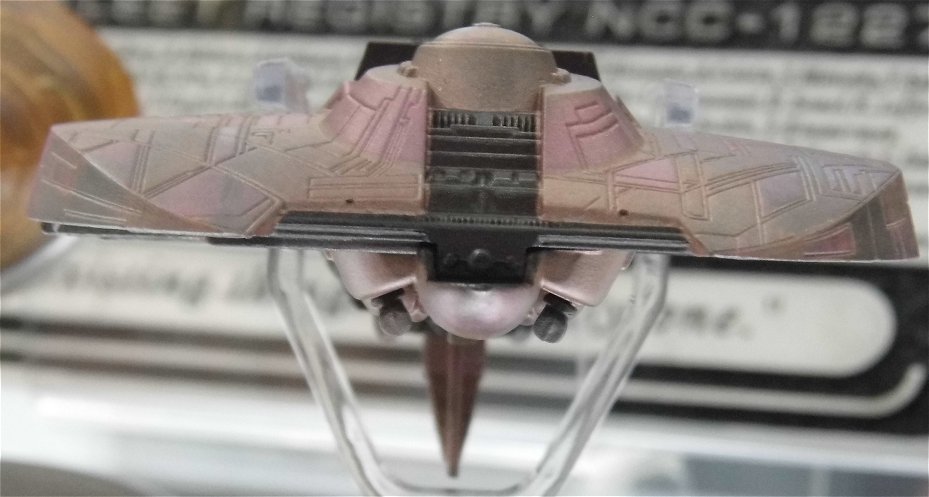
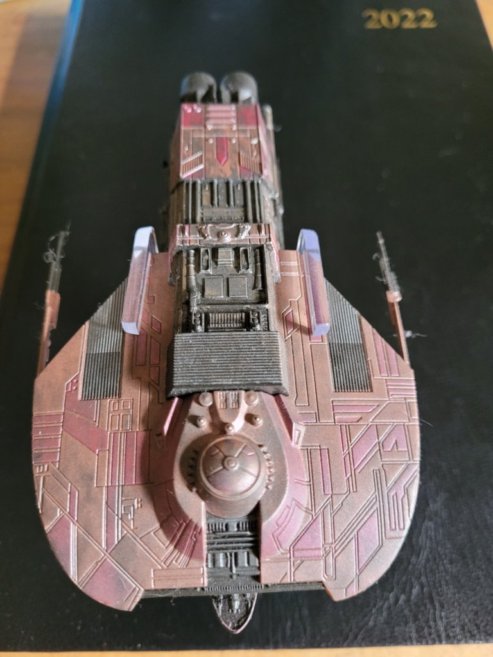
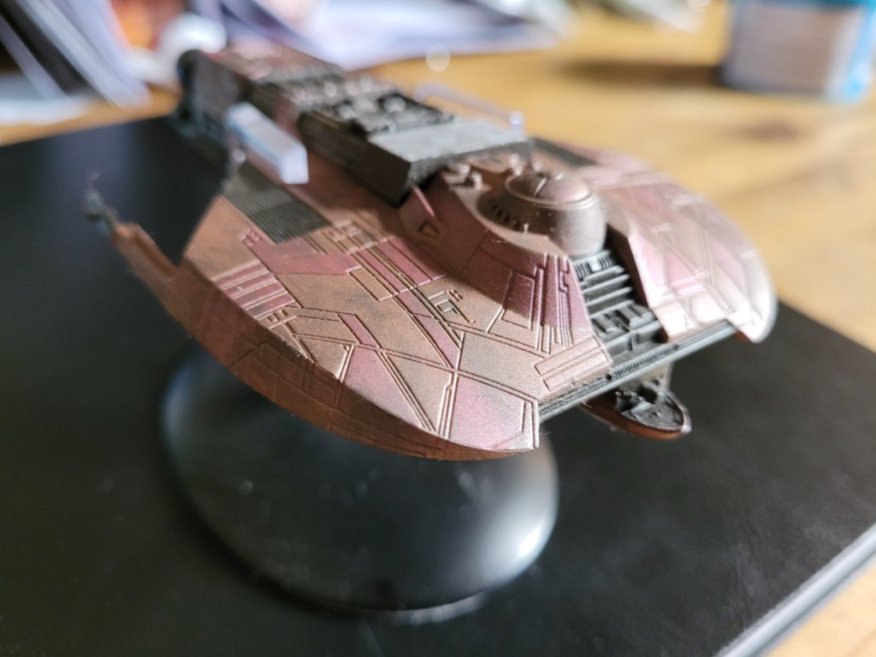
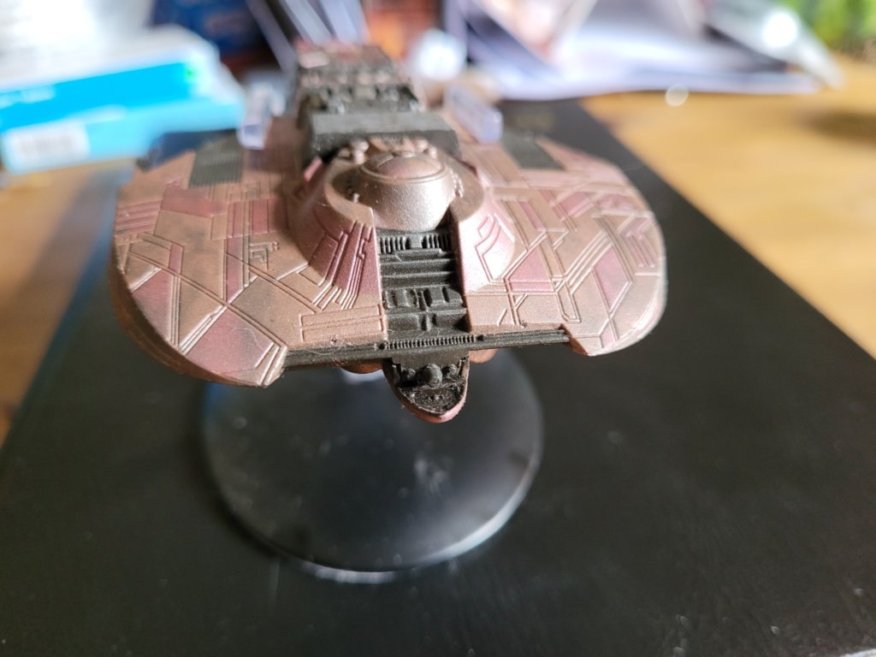
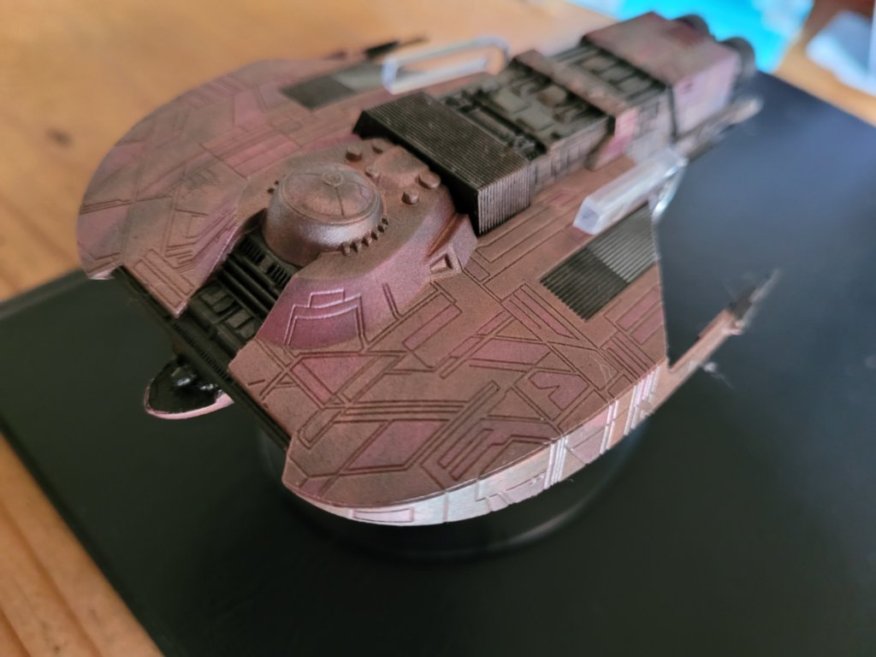
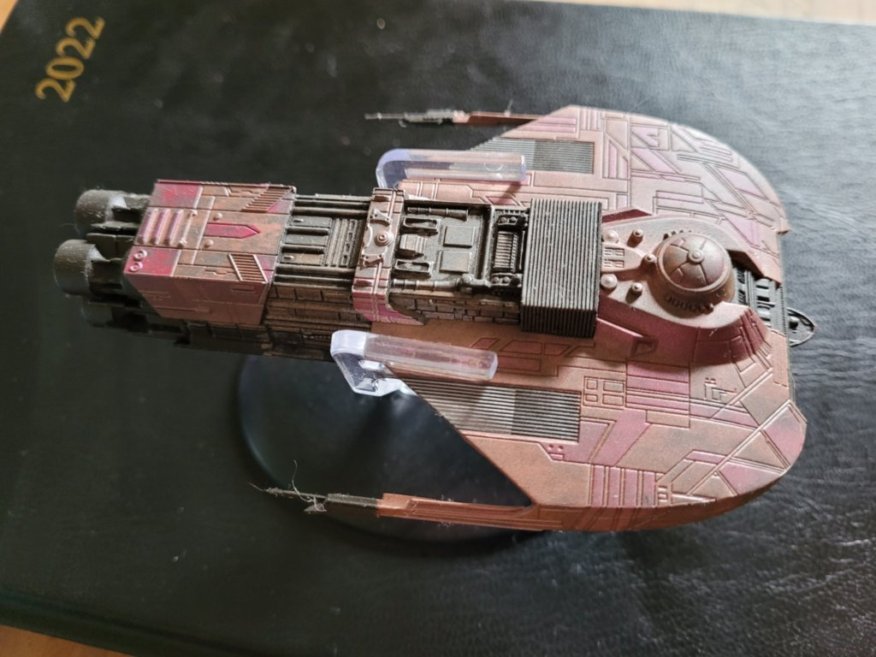
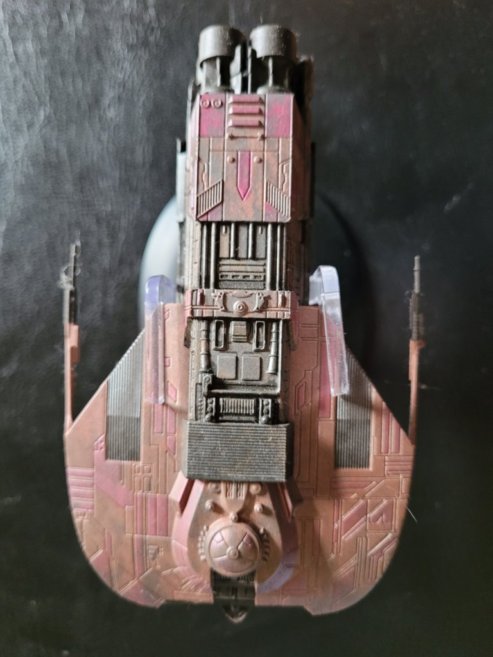
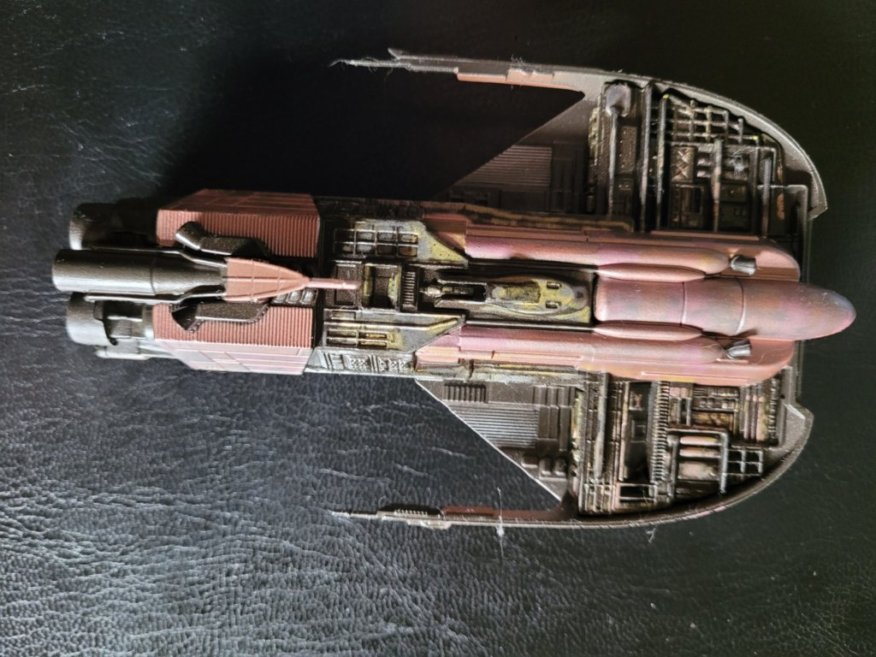
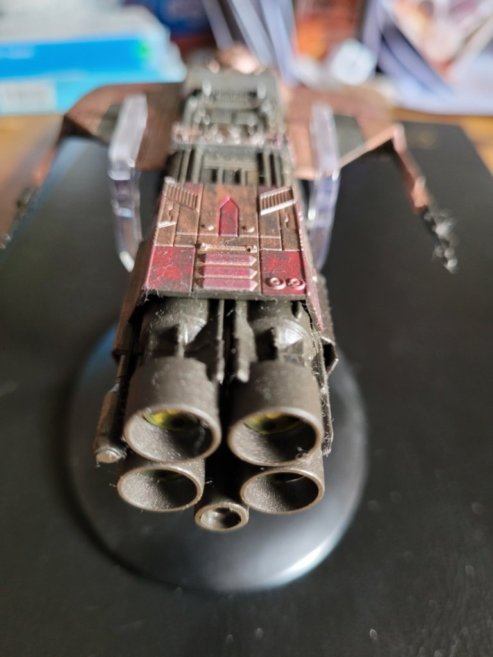
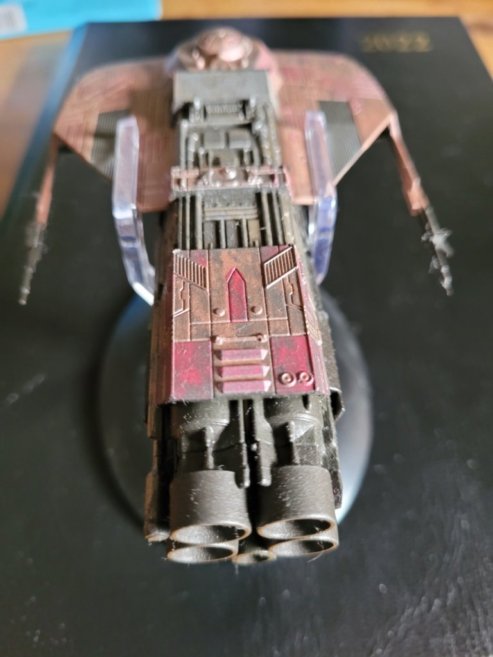
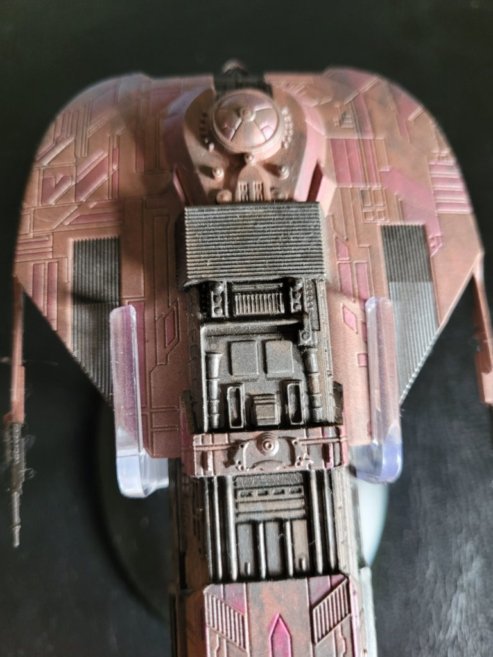
The whole point here is to do like the musical 'Wicked' and turn the Star Trek universe on its head. We've seen for over fifty years the universe form the perspective of Starfleet. Now it's time to see the perspective from the average person in the Federation. Where the people actually have a small freighter and AVOID Starfleet ships. This will explore criminality and the reasons behind it in the 23rd Century. It will also look at how much has changed - and how much really hasn't - since the 21st Century. My visit to McBride, British Columbia last year showed the realities of going back to basics and building your own log cabin. This is about starting from nothing. Sinking a well, digging an outhouse for sanitation and then building your home by hand from scratch. This takes a lot of time and energy. Whilst in the Star Trek universe they have technology, you don't have pop-up houses. This is out on the frontier. Most colonies are started for settling people, farming crops, mining dilithium or other minerals or performing research - either away from the public or where the item of research is available.
Life on the colonies isn't really any different from life in rural Canada, Alaska or Siberia now. Beyond the supertech power source for your home, the 100% recycler/food processor and fabricator you still have the same sort of possessions that someone out there would have now. There are no nightclubs or holiday resorts. Starfleet barely sends an Okinawa class corvette/frigate every now and then to see how you are. Transports arrive periodically with either more colonists, goods or supplies that are energy intensive to be replicating constantly. This is about daily hard work of taming a 100% wild planet, farming or mining or working the research station whilst clearing ground and building homes and bars. Home-schooling and residing either in home or at your place of work is the reality of colonial life. Barn-dances and home entertainment is the order of the day. Occasionally perhaps a Starfleet ship will come for shoreleave. Here, the values of Gene Roddenberry's Star Trek are put to the ultimate test. After all, as Ben Sisko once said, it's easy to be a saint in Paradise...
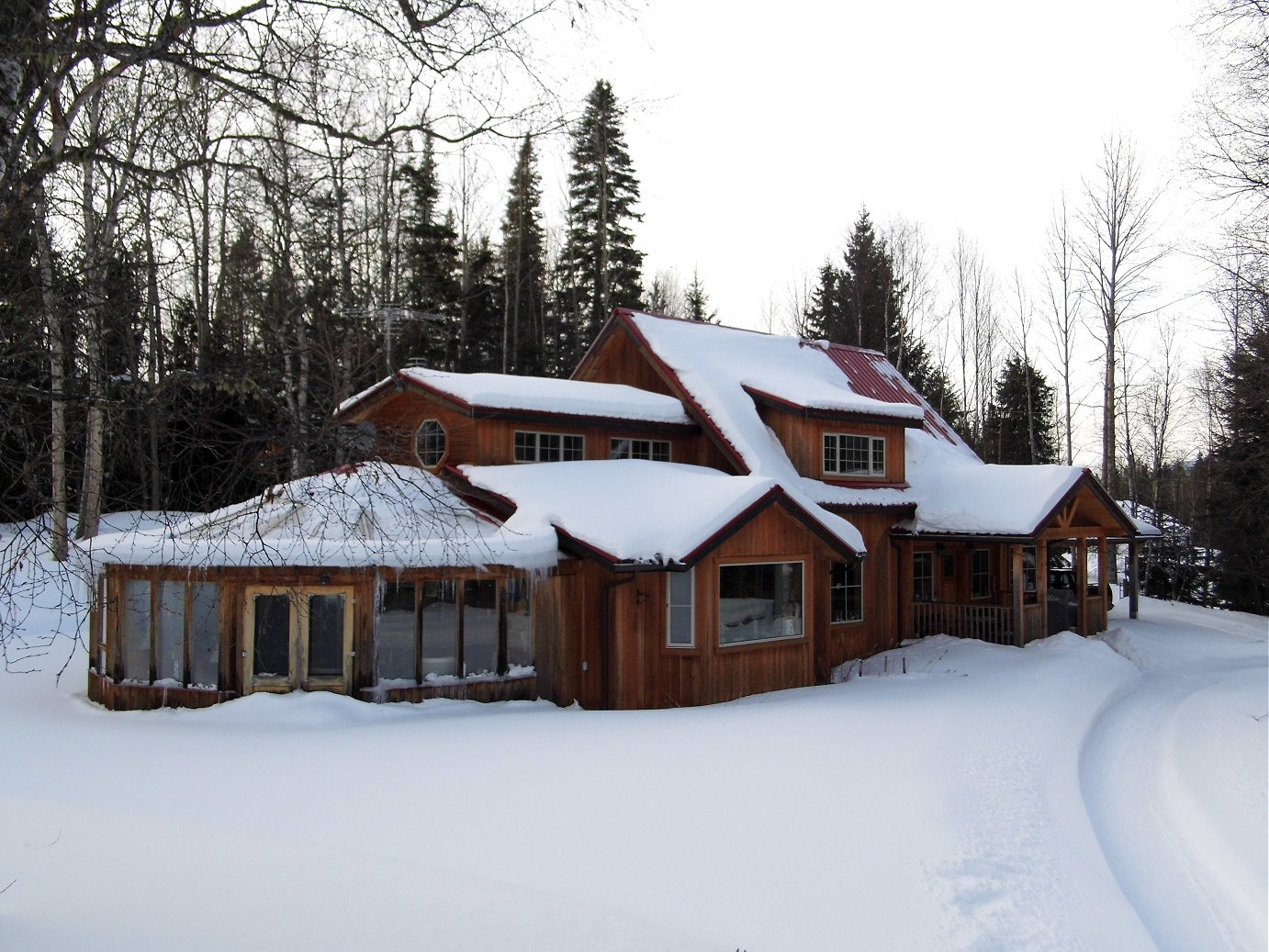
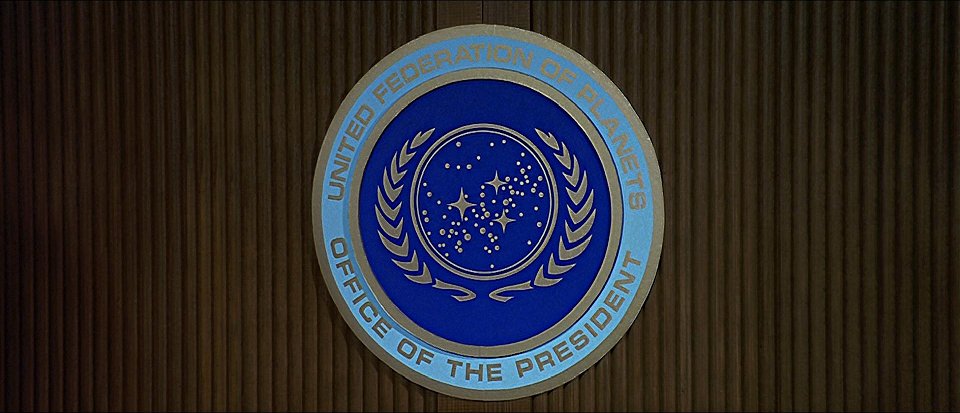 President Sojetsullah Wollixiwull
President Sojetsullah Wollixiwull
(2300 – 2304, 2304-2308)
One of the things to do is about the Presidents, Senators and Federation Council. We have Aowr Sh’ghee as our current second term president (2308 – 2312, 2312 - ) and we know we have Ra’Ghoratreii in three terms up to 2300 (Cast No Shadow novel - 2288 – 2292, 2292 – 2296, 2296 – 2300) and I have written an unnamed Rigelian in as the two term missing President from 2300 – 2304, 2304 – 2308.
So we have a new President to write, leaning to Rigelian tendencies, so I feel a more left-wing pacifistic President coming on. One who has done an Aboriginal-style walk to discover his true path – one as senator to his people and President to his nation. Off the back of Khitomer and the Treaty of Nimbus, this is the president who goes for reducing Tacfleet, for disarmament and the ‘end of a chapter of conflict and new chapter of peace’. This is our Neville Chamberlain, our Tony Blair. The emphasis is on exploration and not conflict.
This President will push for the revival of the Federation ideal – as mentioned by Tony Todd in Axanar – and the attainment of higher values held back for decades by the ‘chains of conflict’. This is the revival of the core worlds to act as an example for the outer colonies; this in itself will create the circumstances Sh’ghee will exploit in 2308 to get in on the vote of the outer colonies upset by the central worlds taking all the revival effort.
Our Rigelian President, working with Starfleet Command, will be working on strengthening the non-intervention policy. The Ferasan DMZ is one area discussed behind closed doors, as is the Romulan Neutral Zone. The idea behind this is to look at where Starfleet has been conducting long-term military operations and where these could be wound down or ceased.
This interim President will rely on engagement and conferences to buy peace. The co-operation with Chancellor Azetbur results in the agreement for the Nirophian Corridor, but at the cost of the Federation backing off on such issues as Terajun and Ch’ramak. More emphasis is placed on Okinawa class and T’lani class scouts, backed up with Oberth class. Dreadnought and carrier projects are questioned in a review of Starfleet that looks at whether such colossal vessels are warranted in the 24th Century.
Initially his C-in-C would be chosen to match his policies, so we are looking at a more pacifist Starfleet Commander. A Vulcan would be the logical choice, but the path is there for an Admiral who is Betazoid, Deltan or Tellarite. All of this would take place whilst Sulu was working his way up the ranks from Chief of Starfleet Science as a Rear Admiral all the way to the top job.
We also have, from Star Trek: Axanar, the Federation Council chambers and Archer Arena (as seen in Enterprise finale). This gives us more to play with than the small arena seen in ST:IV. More fleshing out of the core worlds is needed: Earth, Axanar (the planet in the centre of the Federation), the Rigel colonies...
More on our interim Rigelian President of 2300 – 2304, 2304 - 2308.
Early on in his first term, this Rigelian President would have been praised for the beginning of anti-piracy operations in earnest against the Orion Syndicate. Both the core worlds and outer colonies welcomed this action. The expansion programme with the starbases would bring the Federation closer, providing security and a sense of wholeness.
He will have been behind the humanitarian support to the Klingon Empire after their skirmish with the Sha’kurians. To help keep them on-side, medical aid and ships would have been loaned to assist.
When the Tholians take advantage of the situation, the President continues the aid to the Klingons, despite protests by the Tholian ambassador. The president cites that it is the Tholians that are on the offensive and that the Federation has been asked for humanitarian assistance.
Federation President Aowr Sh’ghee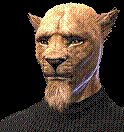
(2308 – 2311, 2312- )
The new 2312 President of the United Federation of Planets (after Ra-ghoratreii and Wollixiwull) is a Caitian. Since 2308, this President has served one term after the previous Rigelian who served 8 years after Ra-ghoratreii. The new President was sworn in 2322 and has promised to shape the Federation for the century ahead. President Sh’ghee comes from a long and distinguished line of Caitian diplomats and is the first to ascend to the Presidency of the UFP. It is said that the Caitian race has not had a sufficiently loud voice in the Federation, a detail that the new President is eager to re-dress.
Under the watch of President Sh’ghee the Ferasans have allied themselves with the Klingon Empire in a Trade Agreement. Sh’ghee knows the cultural history with the Ferasans and the Treaty of Sirius; the Ferasan Patriarchy pressed for the abolition of the Treaty, freeing this genie from the bottle in which it has been kept for decades. Back home on Cait there has been a growing movement towards discussions with the Ferasans, the sentiment being that time has passed and blood is blood. Should the Caitian nation make a move to join with the Ferasans, this could mean that the President has to step down.
Senator Lyrrus R’less
R’less is the current Federation Council representative for the Caitian people. R’less took over when Aowr Sh’ghee was elected as Federation President in 2308. R’less entered politics after the people wanted someone to represent the Caitian Nation as a whole.
R’less is pro-negotiations with the Ferasans but on the terms of the Caitian people. The trade agreement between the Ferasans and the Klingon Empire is seen as an embarrassment; the President is seen as having failed to foresee the move despite having the resources of Starfleet Intelligence at his disposal.
Senator R’less has put herself at odds with the President for the spirit of the Caitian people. The election saw the Caitian vote split between support for the President and support for R’less approaching the Ferasan issue on behalf of Cait itself.
A list of former presidents:
2161 - ?: Thomas Vanderbilt (Human male) (Star Trek Generations newspaper clip)
Mid-22nd Century): Haroun al-Rashid (pronounced "Ha-roon Ar-Ra-sheed") (Human male) (Articles of the Federation by Keith R.A. DeCandido)
(Mid-22nd Century): Avaranthi sh'Rothress (Andorian shen [female]) (Articles of the Federation by Keith R.A. DeCandido)
(Late 22nd Century): T'Maran of Vulcan (Vulcan female) (Articles of the Federation by Keith R.A. DeCandido)
2184-2192: Jonathan Archer (Human male) (ENT: "In a Mirror, Darkly, Part II")
(early 2230s, two terms): Madza Bral (Trill female) (Articles of the Federation by Keith R.A. DeCandido)
2260 - 2268: Kenneth Wescott (Human male) (Errand of Fury, Book I: Seeds of Rage by Kevin Ryan; date of at least one term from Articles of the Federation by Keith R.A. DeCandido)
2269 - 2273: Lorne McLaren (Human male) (date of at least one term from Articles of the Federation by Keith R.A. DeCandido)
2273 – 2277 UNKNOWN
2277 – 2280 UNKNOWN
2280 – 2284 UNKNOWN
2285-2288: Hiram Roth (Human male) (Star Trek IV: The Voyage Home, dates of at least one term and name from Articles of the Federation by Keith R.A. DeCandido)
2289-2300: Ra-ghoratreii (Efrosian male) (Star Trek VI: The Undiscovered Country", dates from Articles of the Federation by Keith R.A. DeCandido, species name from Star Trek production office name for makeup design, character name from novelization of Star Trek VI: The Undiscovered Country by J.M. Dillard)
2300 - 2308 Sojetsullah Wollixiwull (Rigelian male)
2308 – 2316 Aowr Sh’ghee (Caitian male)
2316 - Gan Laikan (Human male from Alpha Centauri) (TNG eBook: Slings and Arrows: Enterprises of Great Pitch and Moment)
Author's Notes:
The United Federation of Planets is something that requires discussion in quite a bit of detail. So it's cup of tea time and a comfy chair before you read further.
That isn't to say that the original dreams of Gene Roddenberry do not reach out beyond the core systems. It is just to say that the message and the dream is still spreading out from the homeworlds, like ripples in a pond. One example of this Nimbus III, the Planet of Galactic Peace. As shown in Star Trek V, despite the ideals of the Federation, and the best intention in the Universe, sometimes dreams take a little longer to come to fruition. despite the best intentions of the Federation, resources are not infinate. Many of the colonies shown in the Original Series also show Federation colonies [such as the ones visited by Mudd's Women] to still be of a basic nature, where the colony exists to supply dilithium to power the dreams of the Federation.
Starbase 77 is another example of where intentions and ambitions have yet to gel together.
The name Admiral Eugene Roddenberry has often been cited in very small print on starship plaques since the time of Star Trek: The Next Generation. It is only right that Gene Roddenberry have his mention is Star Trek history. This is, after all, his vision that he has shared with us all.
"The above artwork is © Interplay Productions. All rights reserved"










 The United Federation of Planets: currently in 2293 it consists of 87 member worlds (and their colonies) forged together as a vast unified democratic nation. Each member has a single vote in the say of the Federation Council; this was deliberately intended to enforce the forging of consensus between members. As the Federation has grown and new members are sworn in, so the forging of alliances and consensus has become more challenging. It also changes the beliefs, and thus the face of the United Federation of Planets, over time. It was formed in the Earth calender date May 8th 2161. Admiral Jonathan Archer declared this day to be the day that the Earth made a new alliance that would spread the word of peace and exploration across the universe. The latest additions to the Federation include the Betazoids, Bolians, Trill and Grazerites. Their worlds are the latest to be enhanced with starbases, shipyards, science and medical resource centres, as well as being firmly paced on Federation trade routes.
The United Federation of Planets: currently in 2293 it consists of 87 member worlds (and their colonies) forged together as a vast unified democratic nation. Each member has a single vote in the say of the Federation Council; this was deliberately intended to enforce the forging of consensus between members. As the Federation has grown and new members are sworn in, so the forging of alliances and consensus has become more challenging. It also changes the beliefs, and thus the face of the United Federation of Planets, over time. It was formed in the Earth calender date May 8th 2161. Admiral Jonathan Archer declared this day to be the day that the Earth made a new alliance that would spread the word of peace and exploration across the universe. The latest additions to the Federation include the Betazoids, Bolians, Trill and Grazerites. Their worlds are the latest to be enhanced with starbases, shipyards, science and medical resource centres, as well as being firmly paced on Federation trade routes.
 The Federation Council consists of representatives for the core worlds, overseeing the federal laws for them and their sponsored colonies. Federation Council members are decided in democratic elections, held every four years in the midterm of a Presential cycle. Federation Council proceedings are broadcast across the Federation, allowing citizens to watch democracy in realtime. The Federation Council discusses all matters of Federation policy and politics, signing into power Presidential policies or rejecting them. Whilst Federation colonies and worlds are, for the most part autonomous, the Federal laws and constitution that govern the Federation of which they are members, is controlled by the Federation Council. The Presidential Office will need to work on the senators in the Federation Council in order to get political bills passed by the council. Senators are re-elected every six years, and may run as many times as they wish.
The Federation Council consists of representatives for the core worlds, overseeing the federal laws for them and their sponsored colonies. Federation Council members are decided in democratic elections, held every four years in the midterm of a Presential cycle. Federation Council proceedings are broadcast across the Federation, allowing citizens to watch democracy in realtime. The Federation Council discusses all matters of Federation policy and politics, signing into power Presidential policies or rejecting them. Whilst Federation colonies and worlds are, for the most part autonomous, the Federal laws and constitution that govern the Federation of which they are members, is controlled by the Federation Council. The Presidential Office will need to work on the senators in the Federation Council in order to get political bills passed by the council. Senators are re-elected every six years, and may run as many times as they wish.

 The Ideal
The Ideal This ideal, when examined, is focussed on the major homeworlds of the Federation members, and is spread outwards through the administrative aspects of the Federation, such as embassies, ambassadors and, most importantly, Starfleet. Starfleet officers and personnel are taught the ideals of the Federation and go forth into the stars to practice these ideals and uphold these same ideals no matter what is faced.Federation media is also a powerful tool for the spreading of the Federation ideal. As Quark and Garak noted in Deep Space Nine, the Federation is insidious. The Federation ideal is a very attractive one, peace and prosperity, sharing of knowledge and the light of no longer possessing the chains of money and wealth to burden our desires with. Of course, as with most [if not all] ideals, the ideal is most strongest at the source, and the further away from the source one travels, the less strong this ideal is. It is easy to imagine paradise on Earth. All poverty and disease has been defeated, pollution and starvation are the nightmares of the past, and everyone has the equal opportunity to achieve anything they desire and be anything they desire. Further outwards, on the outer rims of the Federation, where supplies are stretched to the limit, where many of the technological advances have not yet reached, these dreams and ideals seem almost as far away as they do in present day Earth.
This ideal, when examined, is focussed on the major homeworlds of the Federation members, and is spread outwards through the administrative aspects of the Federation, such as embassies, ambassadors and, most importantly, Starfleet. Starfleet officers and personnel are taught the ideals of the Federation and go forth into the stars to practice these ideals and uphold these same ideals no matter what is faced.Federation media is also a powerful tool for the spreading of the Federation ideal. As Quark and Garak noted in Deep Space Nine, the Federation is insidious. The Federation ideal is a very attractive one, peace and prosperity, sharing of knowledge and the light of no longer possessing the chains of money and wealth to burden our desires with. Of course, as with most [if not all] ideals, the ideal is most strongest at the source, and the further away from the source one travels, the less strong this ideal is. It is easy to imagine paradise on Earth. All poverty and disease has been defeated, pollution and starvation are the nightmares of the past, and everyone has the equal opportunity to achieve anything they desire and be anything they desire. Further outwards, on the outer rims of the Federation, where supplies are stretched to the limit, where many of the technological advances have not yet reached, these dreams and ideals seem almost as far away as they do in present day Earth. The Federation Council has evolved over time as more and more members have joined. By 2293 there were dozens of member worlds and colonies. Starfleet had a good number of space stations (such as the old K series) and just over 100 of the higher quality starbases (most of the Regula or Watchtower types and a handful of the larger mushroom spacedock type). The Federation Council has evolved alongside Starfleet, growing from the small Coalition of Planets with its half a dozen members and pioneering spirit of Jonathan Archer (like Christopher Columbus era colonialism) to the Wild West-style era of Garth of Izar and James T Kirk. Now the drive from the Federation Council is to 'tame the Wild West' and sent chains of starbases across the Federation. These starbases will create a communication network that will bring the Federation closer together (like the spread of telegraph system across the United States and Australia). This is the defining characteristic of the John Harriman and now Demora Sulu eras.
The Federation Council has evolved over time as more and more members have joined. By 2293 there were dozens of member worlds and colonies. Starfleet had a good number of space stations (such as the old K series) and just over 100 of the higher quality starbases (most of the Regula or Watchtower types and a handful of the larger mushroom spacedock type). The Federation Council has evolved alongside Starfleet, growing from the small Coalition of Planets with its half a dozen members and pioneering spirit of Jonathan Archer (like Christopher Columbus era colonialism) to the Wild West-style era of Garth of Izar and James T Kirk. Now the drive from the Federation Council is to 'tame the Wild West' and sent chains of starbases across the Federation. These starbases will create a communication network that will bring the Federation closer together (like the spread of telegraph system across the United States and Australia). This is the defining characteristic of the John Harriman and now Demora Sulu eras.
 Life in the Core Worlds.
Life in the Core Worlds.

 The Federation is still going through a period of growth, and growth is painful. Picard's Federation is still 70 years away, and the message that will eventually permeate the Federation is still spreading outwards, like bubbles in a soft drink. The dream will be realised, it is only a matter of time. Outer portions of the Federation, such as the driftward 'Eastern' region were only colonised around the time of the voyages of the U.S.S. Kelvin in the 2230s, 40s, and 2250s. These worlds include: Poseidon the water world, Radley's Reach - an L class mining colony and starbases 6, 15, 36, 52, 105 and 123. This region of space is to the core Federation worlds as the Falkland Islands are to Britain or Guam is to the United States of America. They are loyal to the flag, aspiring to the ideals but life is less cosy and much less safe. It is easy to be British in London, or to be American in New York, but when you are on a part of sovereign territory far removed from the source, life is not the same. How easy is it being, or feeling, British in Port Stanley on the Falkland Islands? A very different experience when Queen and Government lies thousands of miles away. So it feels in this distant corner of the Federation.
The Federation is still going through a period of growth, and growth is painful. Picard's Federation is still 70 years away, and the message that will eventually permeate the Federation is still spreading outwards, like bubbles in a soft drink. The dream will be realised, it is only a matter of time. Outer portions of the Federation, such as the driftward 'Eastern' region were only colonised around the time of the voyages of the U.S.S. Kelvin in the 2230s, 40s, and 2250s. These worlds include: Poseidon the water world, Radley's Reach - an L class mining colony and starbases 6, 15, 36, 52, 105 and 123. This region of space is to the core Federation worlds as the Falkland Islands are to Britain or Guam is to the United States of America. They are loyal to the flag, aspiring to the ideals but life is less cosy and much less safe. It is easy to be British in London, or to be American in New York, but when you are on a part of sovereign territory far removed from the source, life is not the same. How easy is it being, or feeling, British in Port Stanley on the Falkland Islands? A very different experience when Queen and Government lies thousands of miles away. So it feels in this distant corner of the Federation. Poseidon is a water world that is rich in rare minerals, it was colonised early on in the region by traversing the 'long way around' from Klingon space. When hostilities flared up, the world was left to its own devices for years. Poseidon was regularly traded with once the Nirophia Corridor was established. In the meantime, the planet had become a playground for less-desireable criminal elements and some of the rare minerals on the planet had been found to have narcotic effects. This has - and still continues to - cause Starfleet concern about maintaining the ideals whilst criminals ply illegal drugs across the Federation from this colony. Technically now a Federation colony once more, the drugs trade is still alive and kicking. Author's note: adapted from the superb RPG Blue Planet.
Poseidon is a water world that is rich in rare minerals, it was colonised early on in the region by traversing the 'long way around' from Klingon space. When hostilities flared up, the world was left to its own devices for years. Poseidon was regularly traded with once the Nirophia Corridor was established. In the meantime, the planet had become a playground for less-desireable criminal elements and some of the rare minerals on the planet had been found to have narcotic effects. This has - and still continues to - cause Starfleet concern about maintaining the ideals whilst criminals ply illegal drugs across the Federation from this colony. Technically now a Federation colony once more, the drugs trade is still alive and kicking. Author's note: adapted from the superb RPG Blue Planet. Nirvana Colony, near Starbase 15 'Pharos', is a centre for psychological research and a colony for the recuperation of both Starfleet and Federation members requiring specialist psychological counselling and treatments. The colony is run by the Federation Medical Council, Starfleet Medical and also private corporations such as the Dharma Initiative and Massive Dynamic sub-corporation ExtenzaLife have facilities and personnel here, developing the RealMe range of products. The best psychopharmaceutical treatments are available here as well as skilled neurosurgeons. As with the Tantalus Colony, this world helps those with psychological trauma to recover and return to their lives. The colony has a curious mixture of medical recuperation centre mixed with a pleasure resort for the relaxation of those with psychological trauma and those just wanting to relax and unwind. Many Deltans, Aenar, Vulcans and Betazoids can be found at this colony; Starfleet assigns personnel from long-range missions to these colonies for a few weeks after their missions as a matter of course to determine the wellbeing of their crews. Starfleet has a duty-of-care to any traumatised by their experiences on the final frontier.
Nirvana Colony, near Starbase 15 'Pharos', is a centre for psychological research and a colony for the recuperation of both Starfleet and Federation members requiring specialist psychological counselling and treatments. The colony is run by the Federation Medical Council, Starfleet Medical and also private corporations such as the Dharma Initiative and Massive Dynamic sub-corporation ExtenzaLife have facilities and personnel here, developing the RealMe range of products. The best psychopharmaceutical treatments are available here as well as skilled neurosurgeons. As with the Tantalus Colony, this world helps those with psychological trauma to recover and return to their lives. The colony has a curious mixture of medical recuperation centre mixed with a pleasure resort for the relaxation of those with psychological trauma and those just wanting to relax and unwind. Many Deltans, Aenar, Vulcans and Betazoids can be found at this colony; Starfleet assigns personnel from long-range missions to these colonies for a few weeks after their missions as a matter of course to determine the wellbeing of their crews. Starfleet has a duty-of-care to any traumatised by their experiences on the final frontier.














 President Sojetsullah Wollixiwull
President Sojetsullah Wollixiwull






